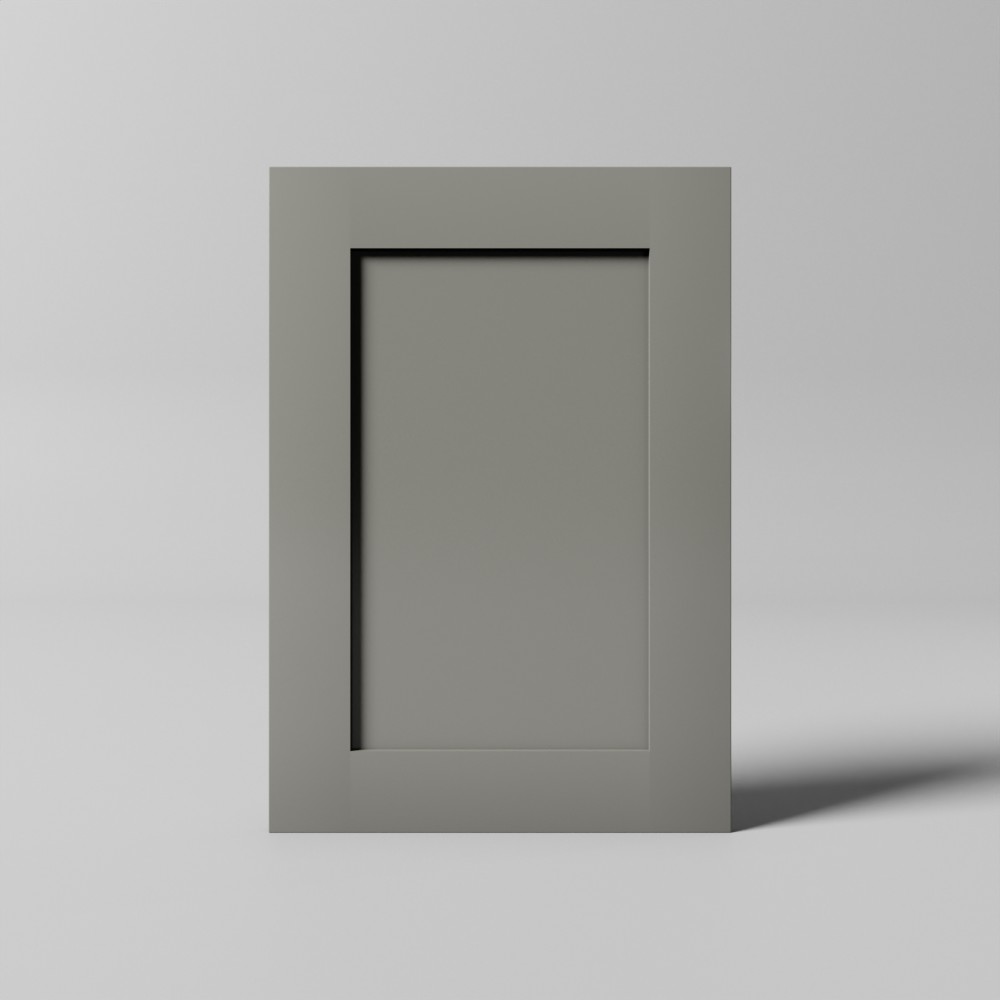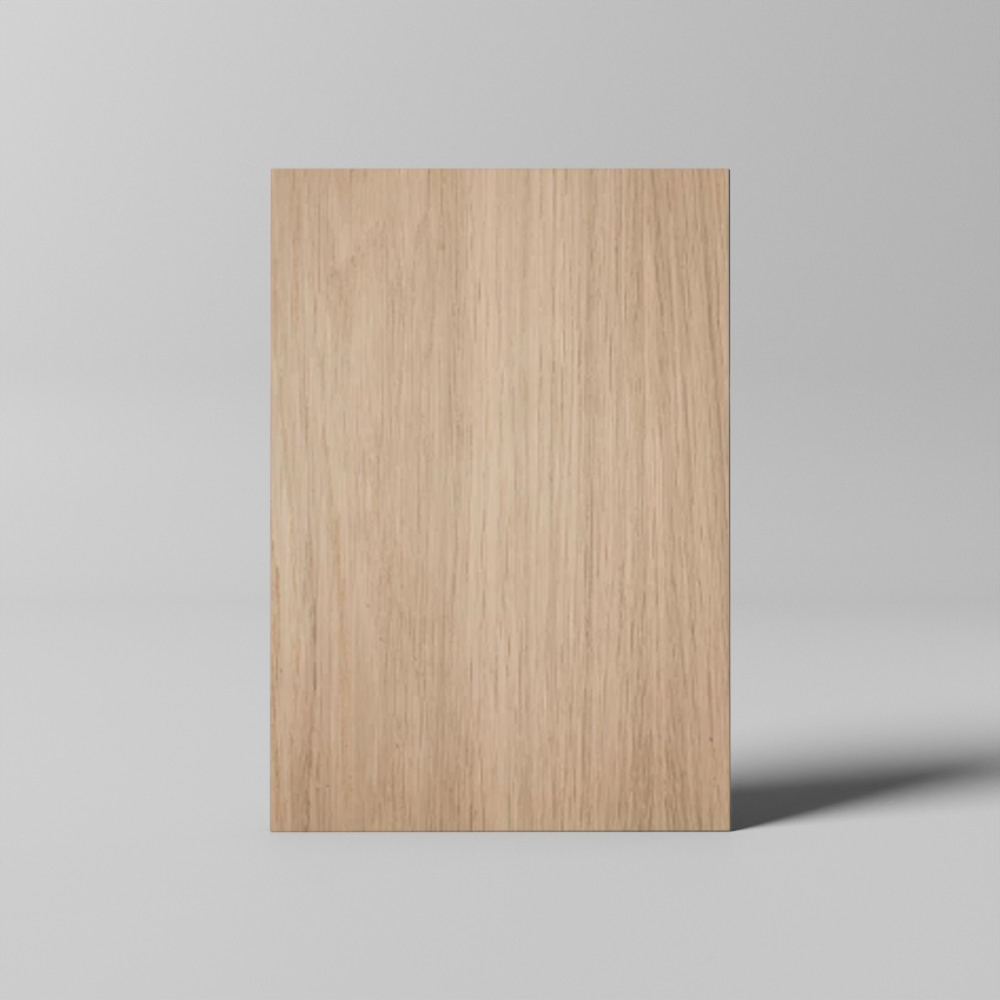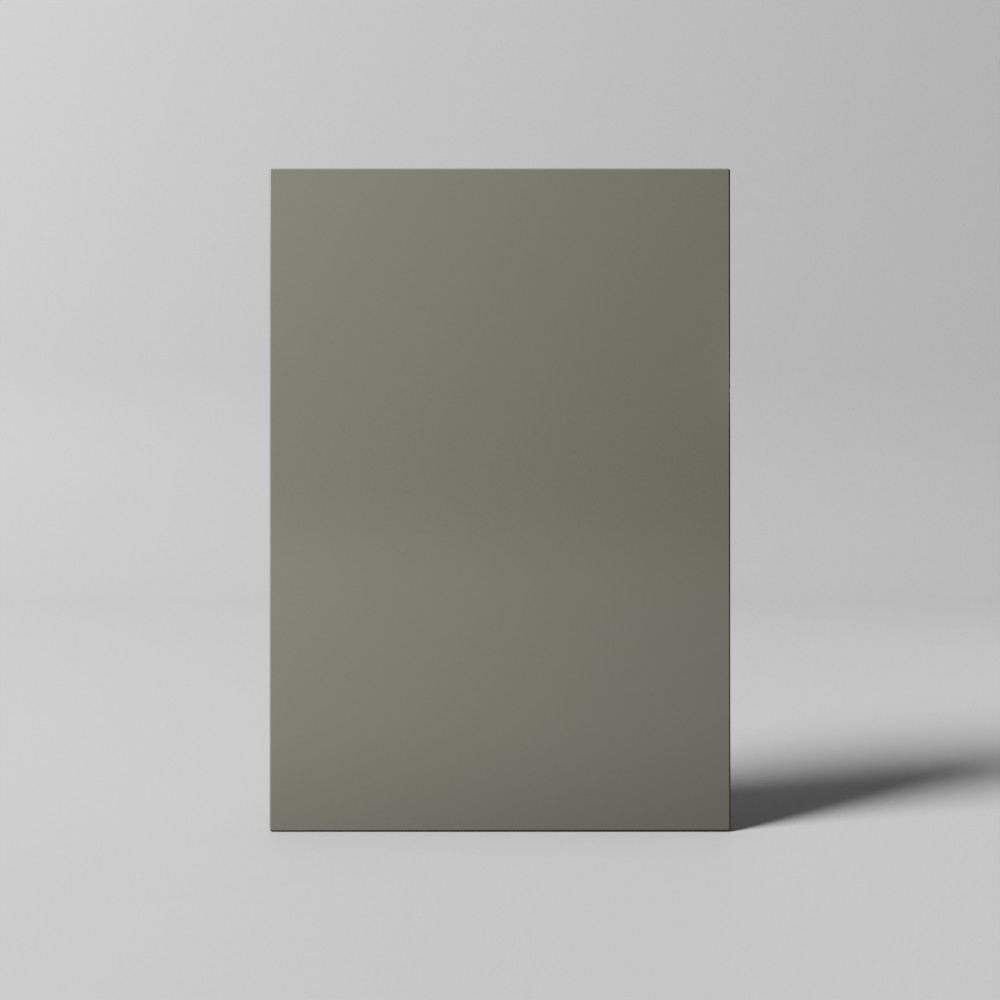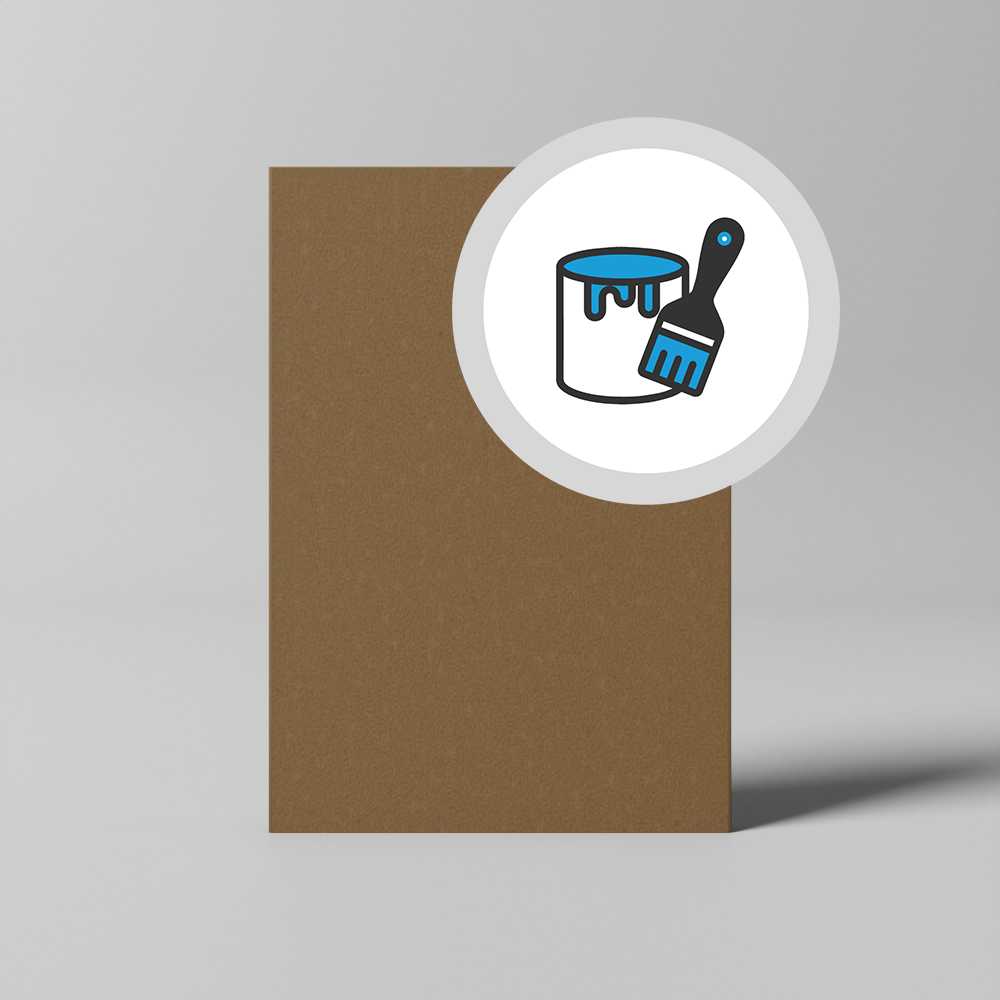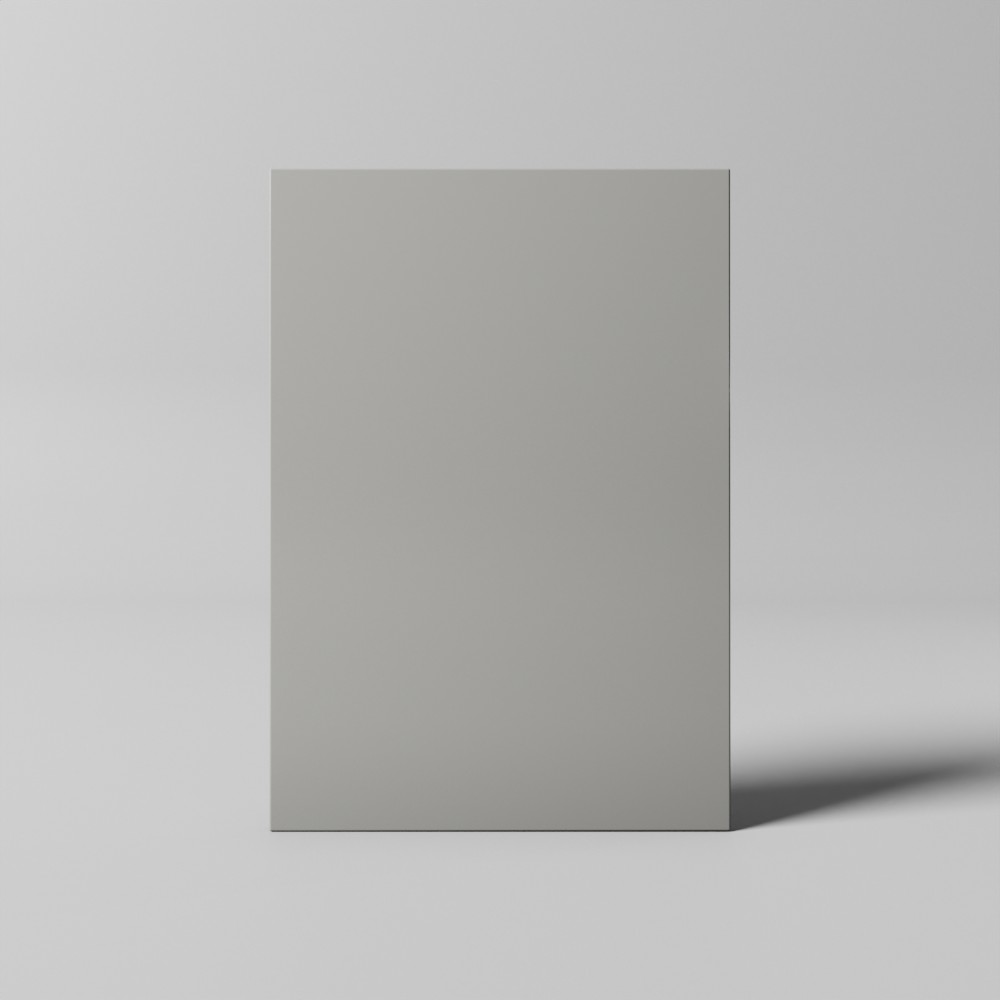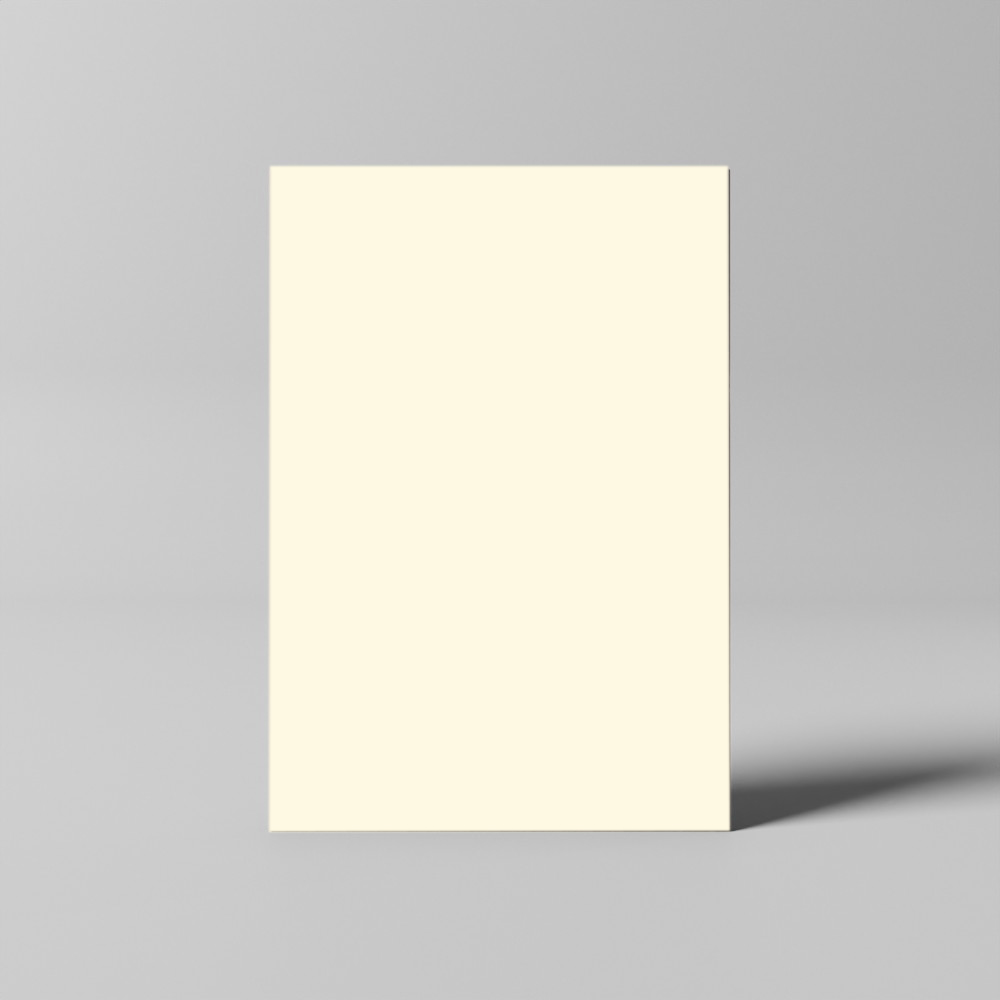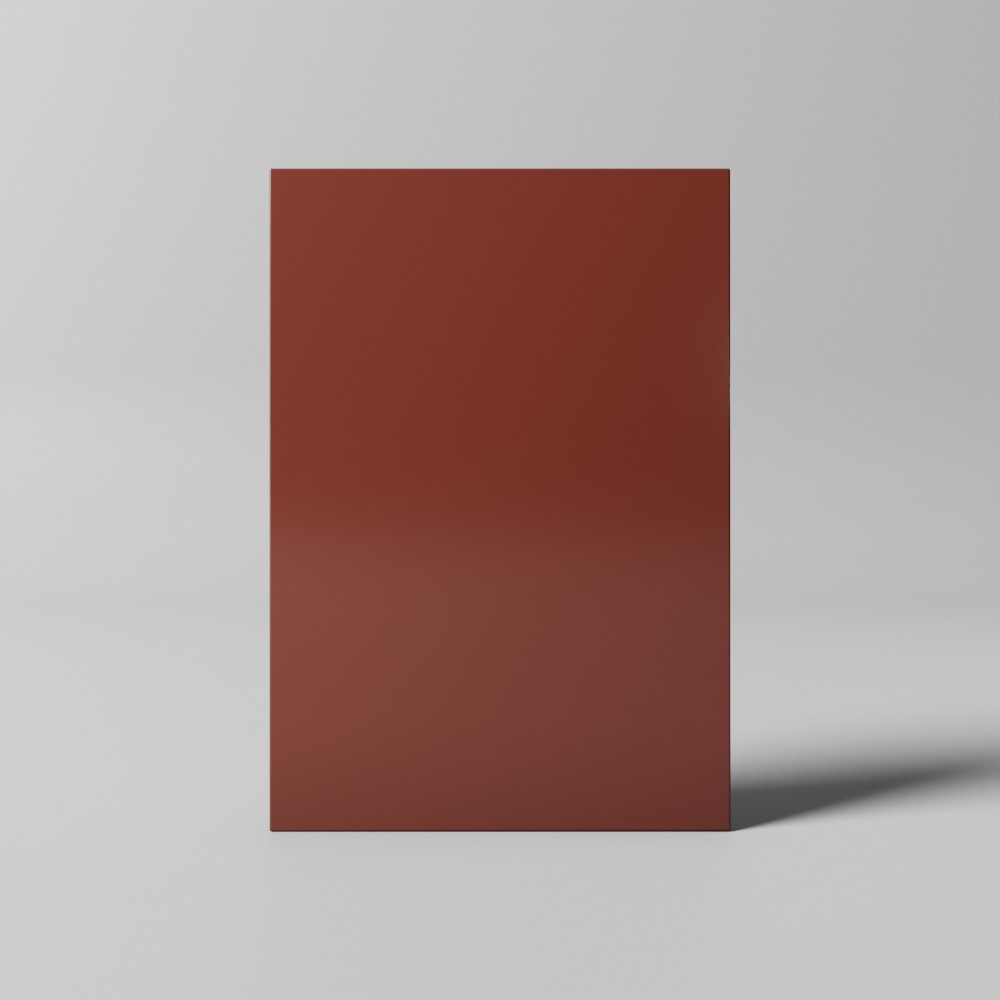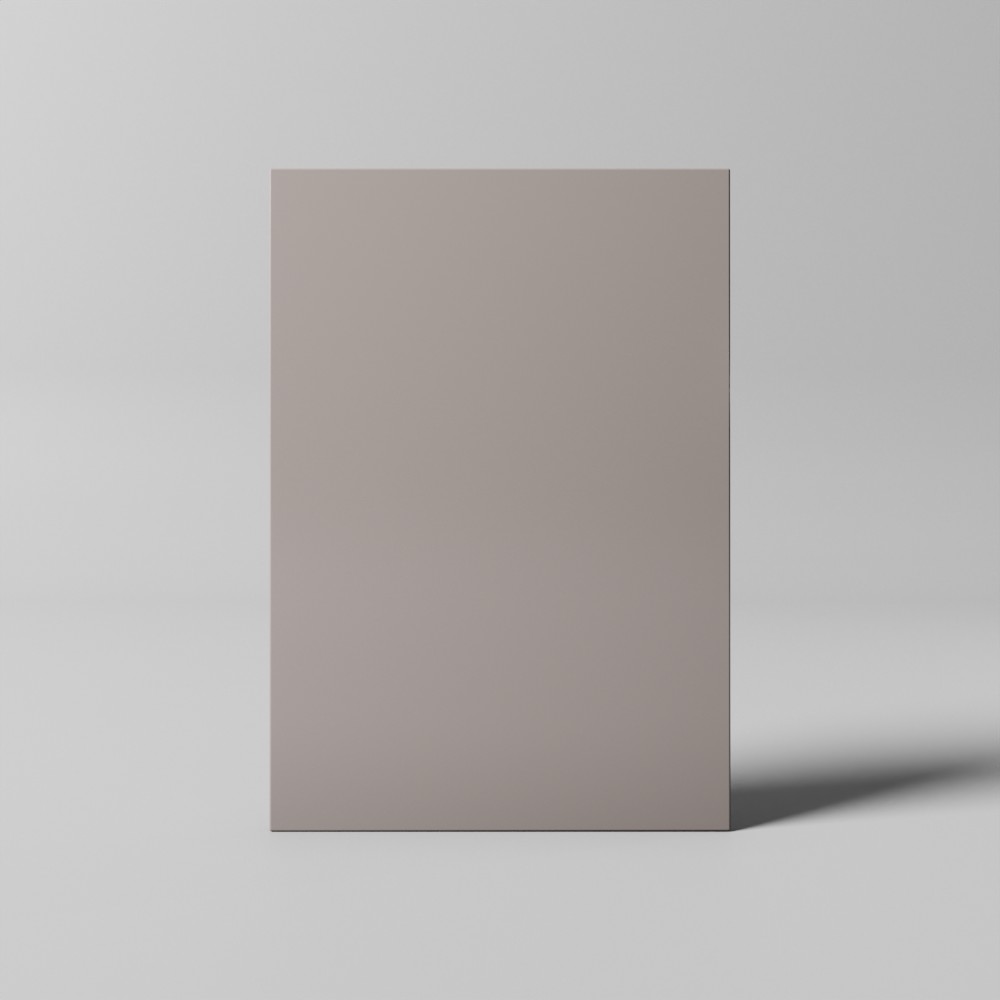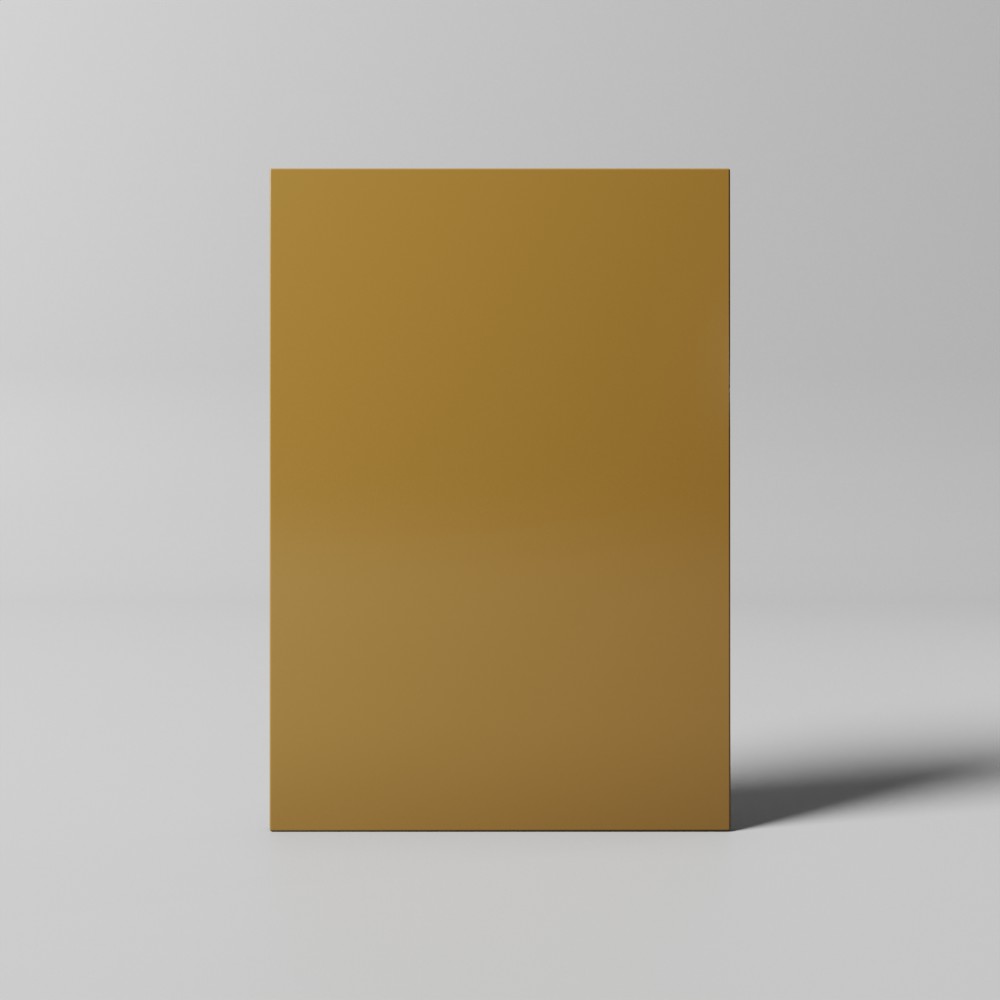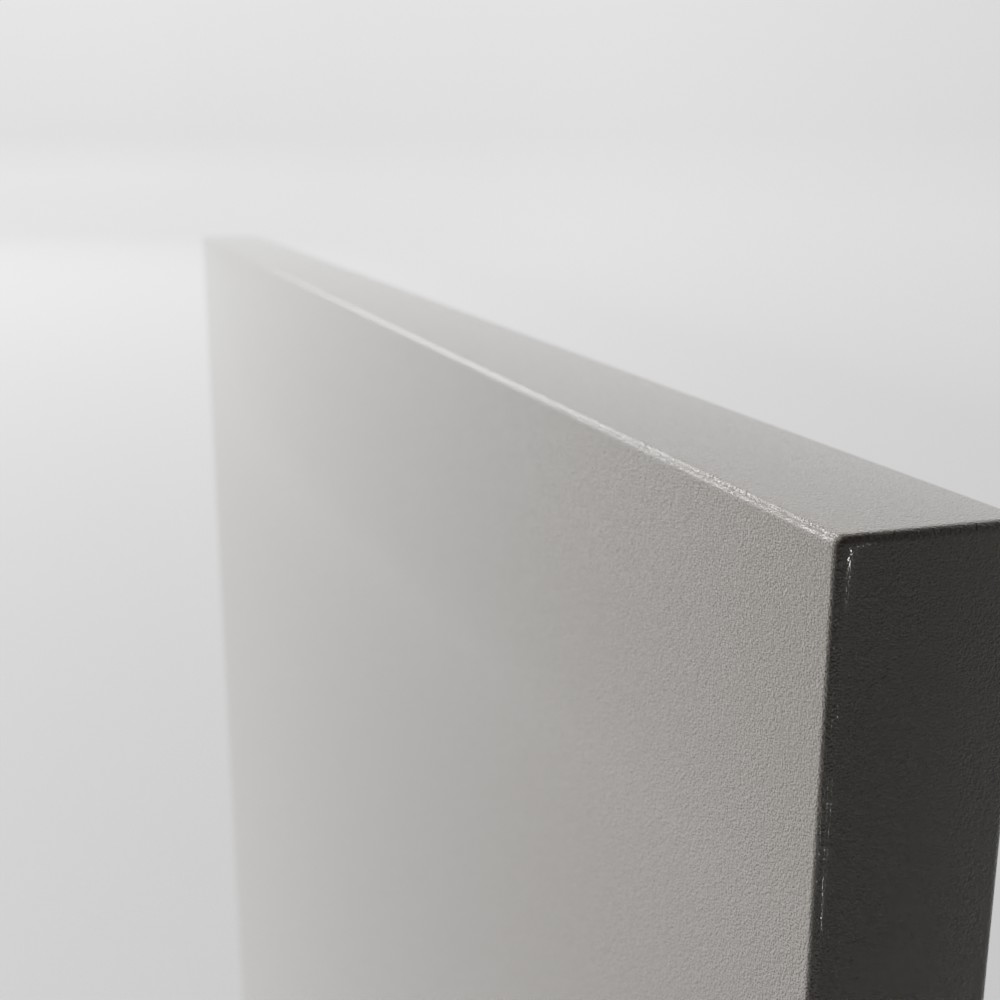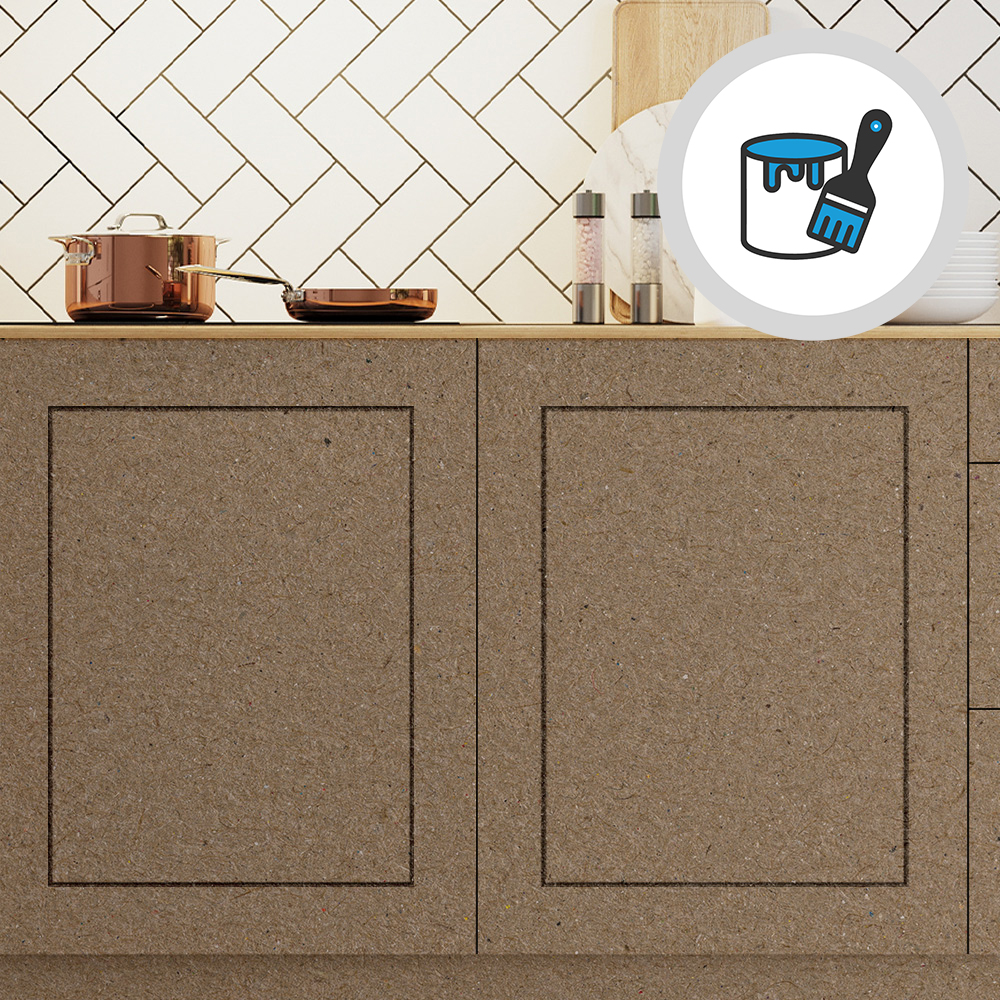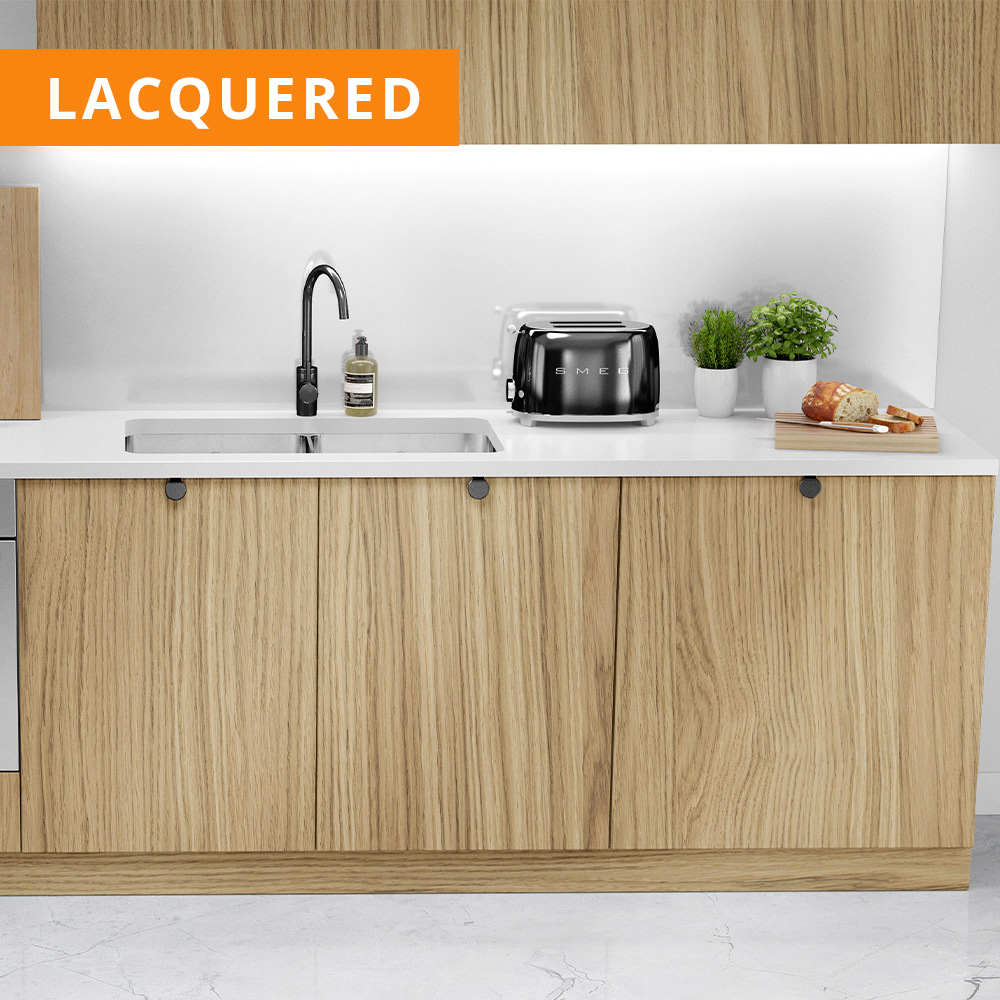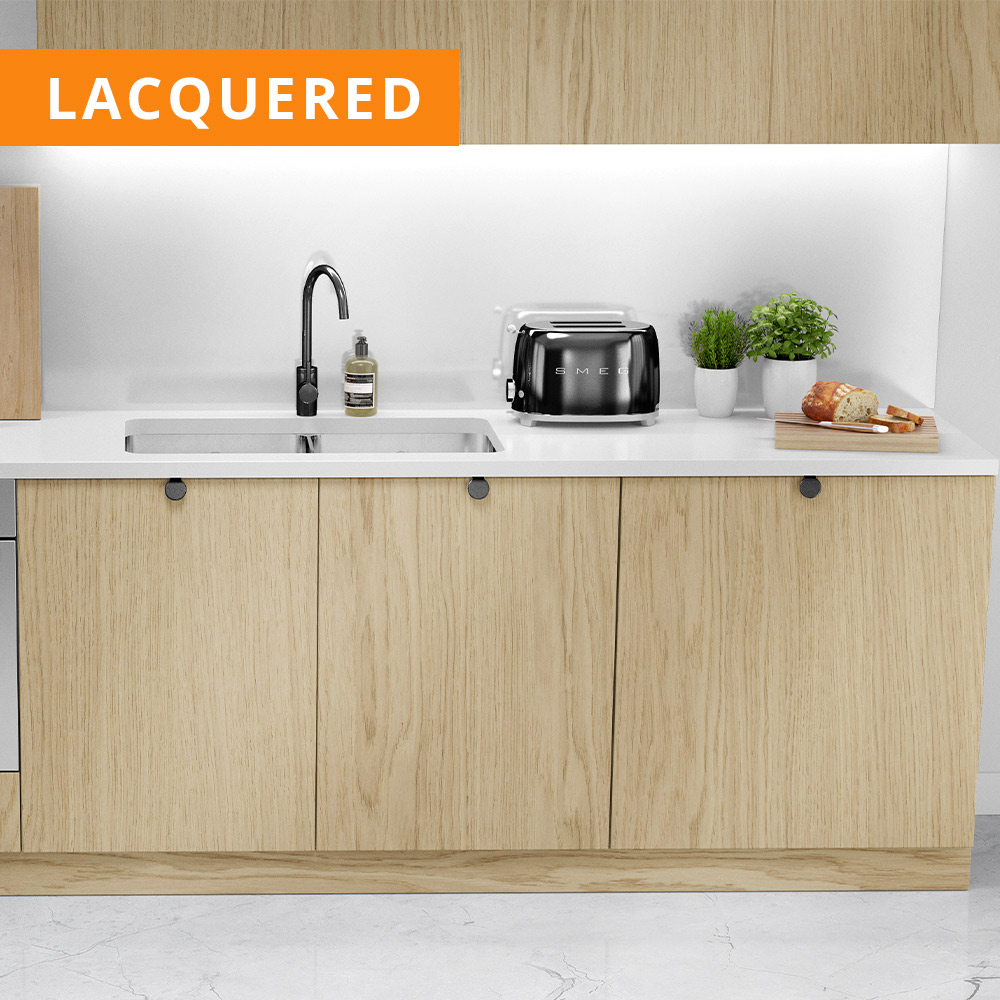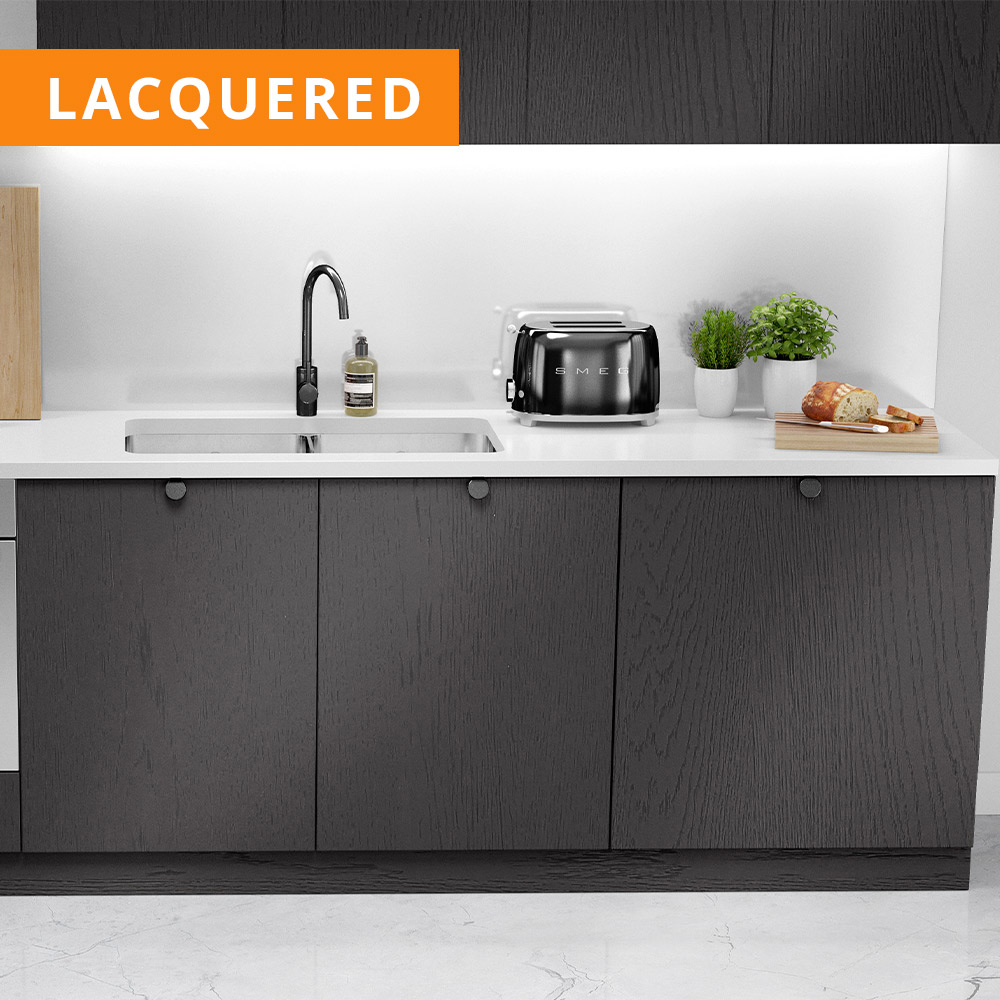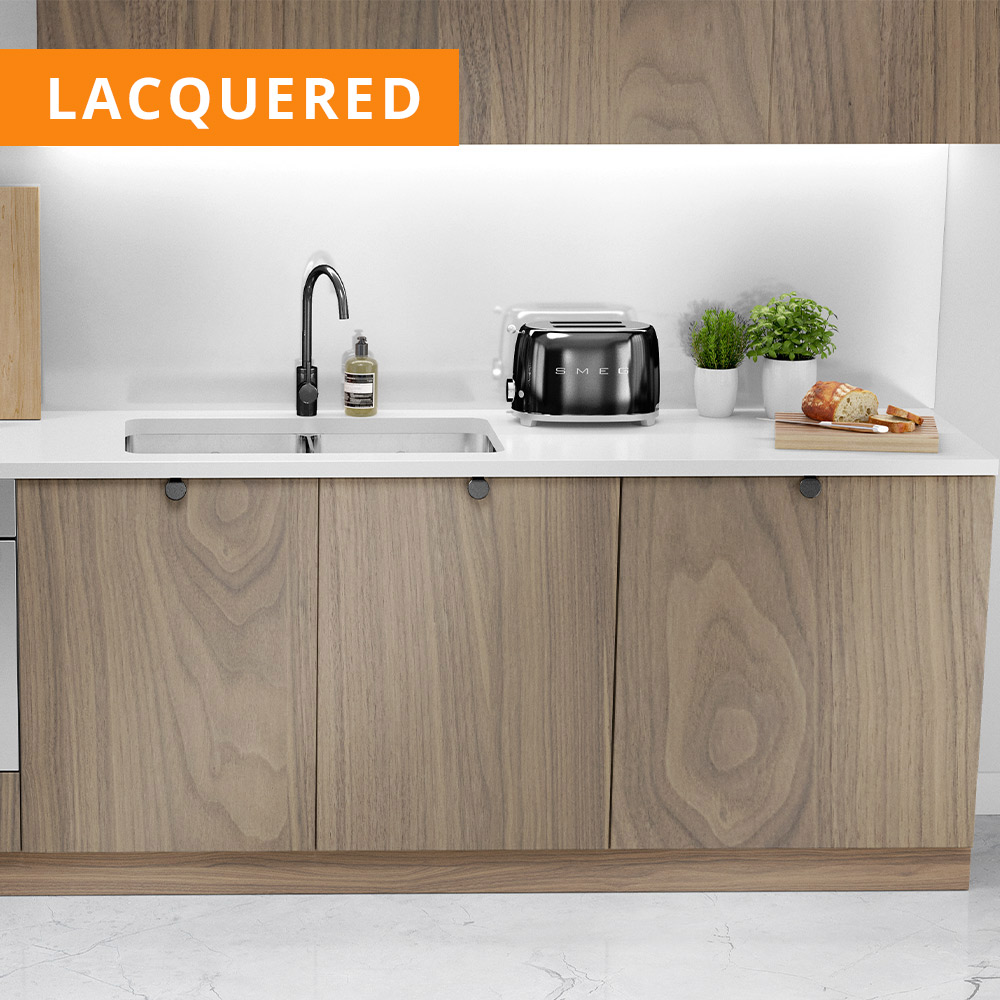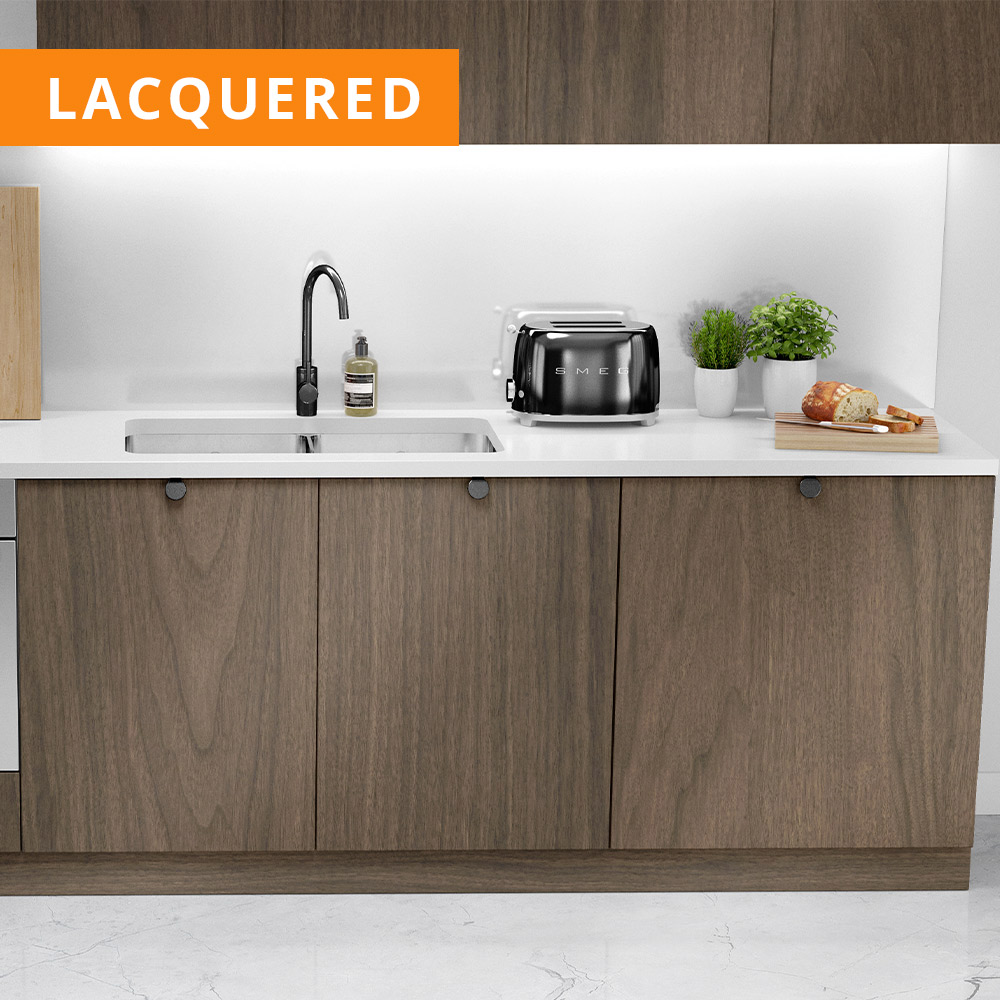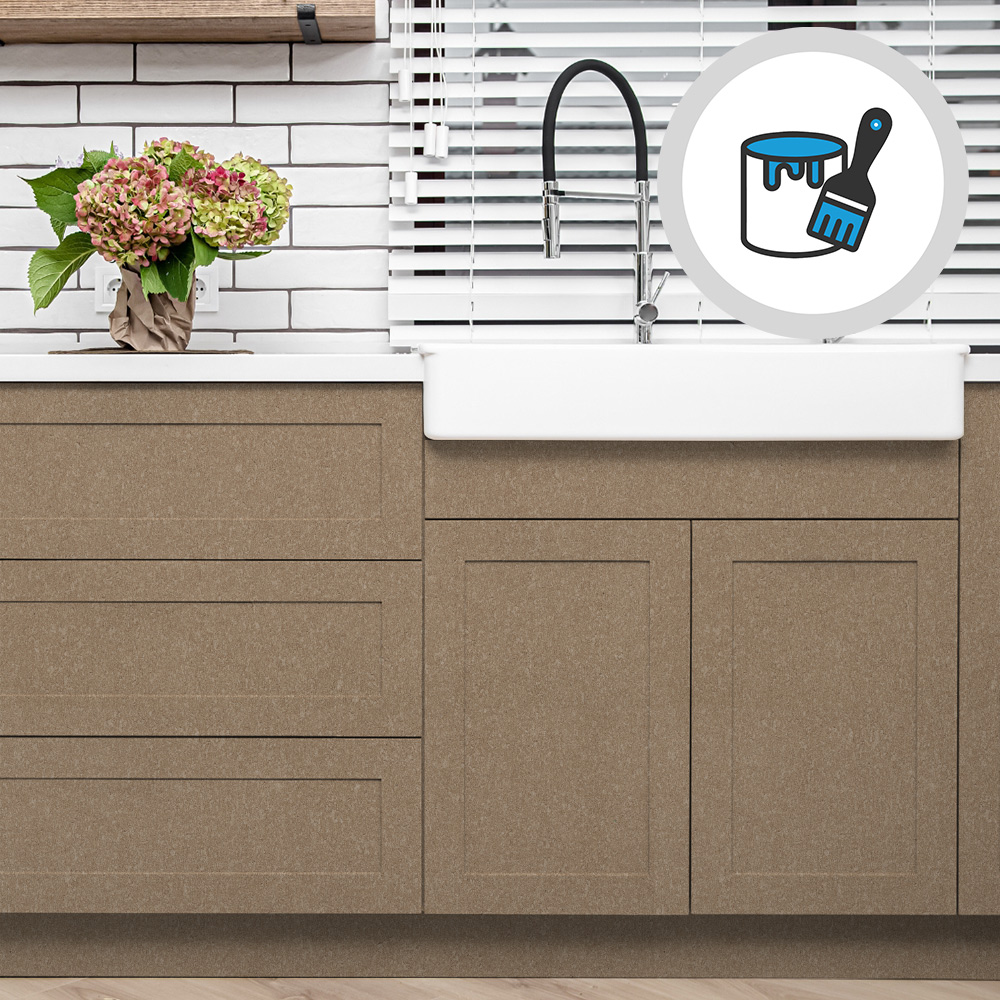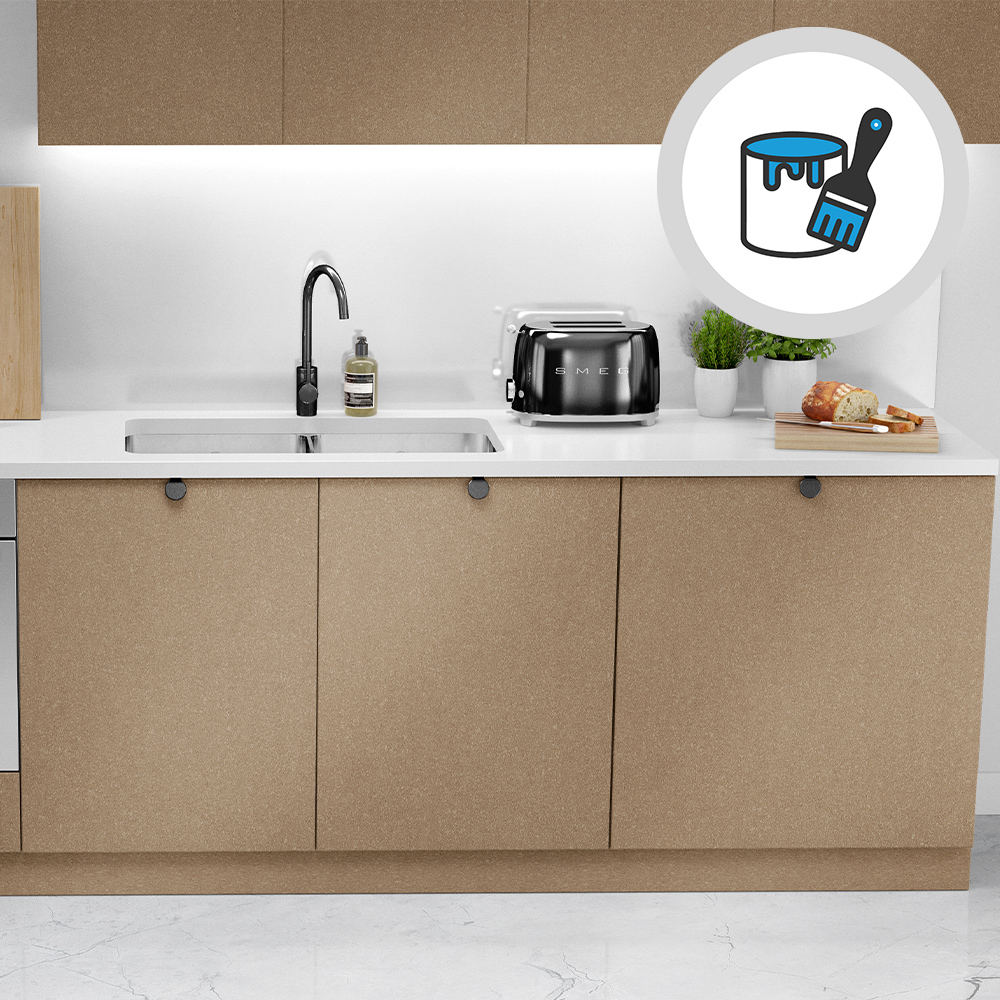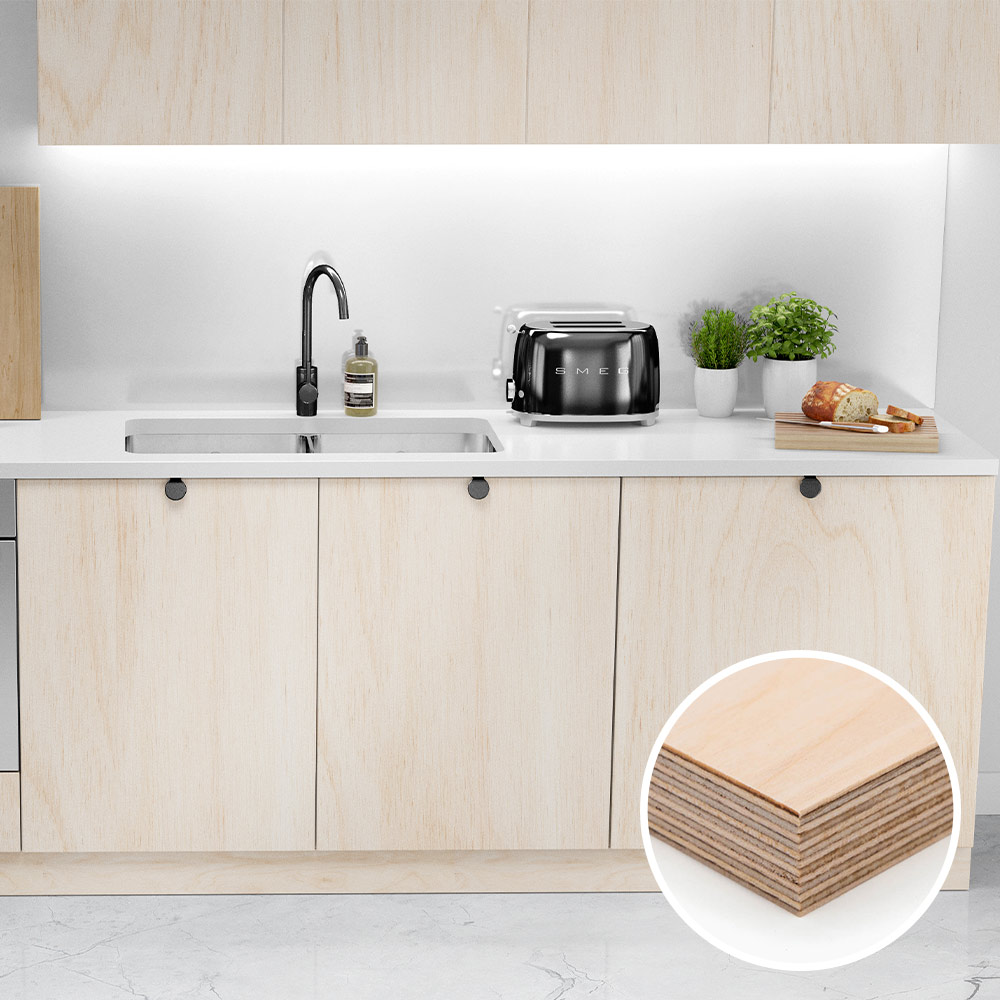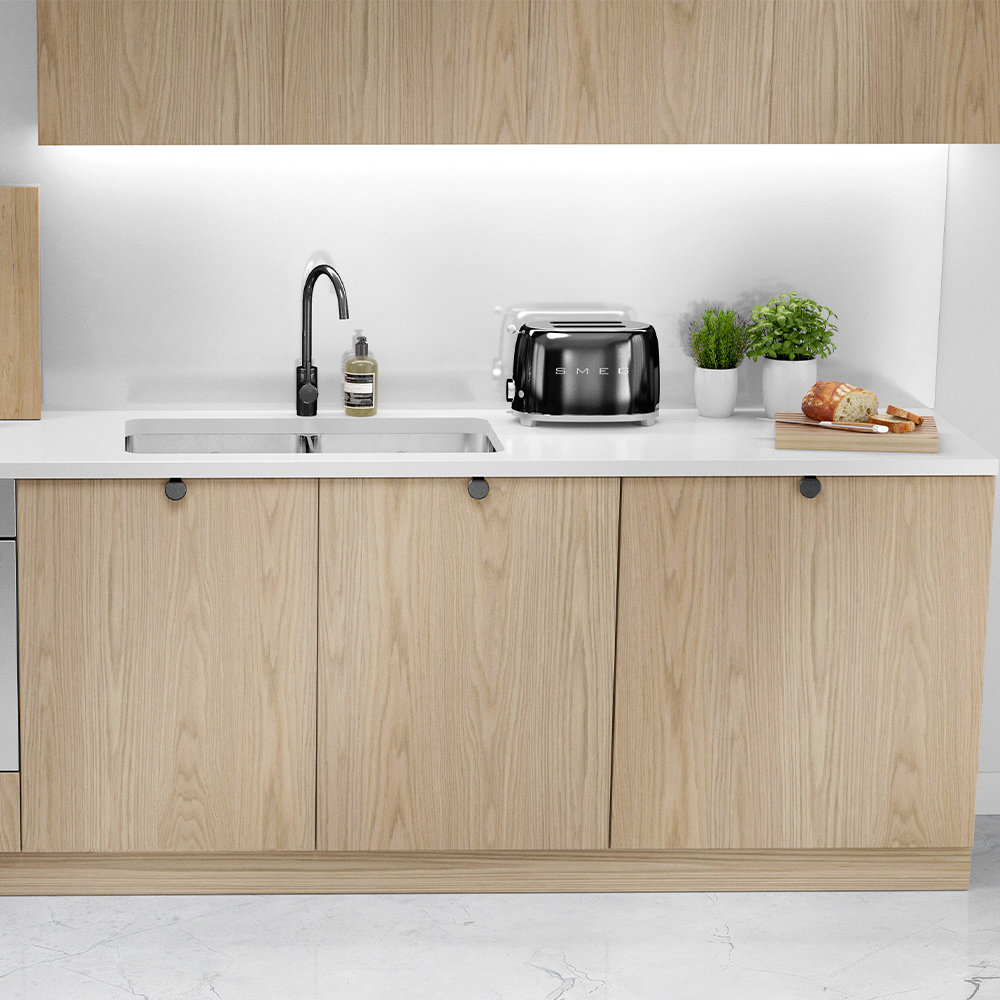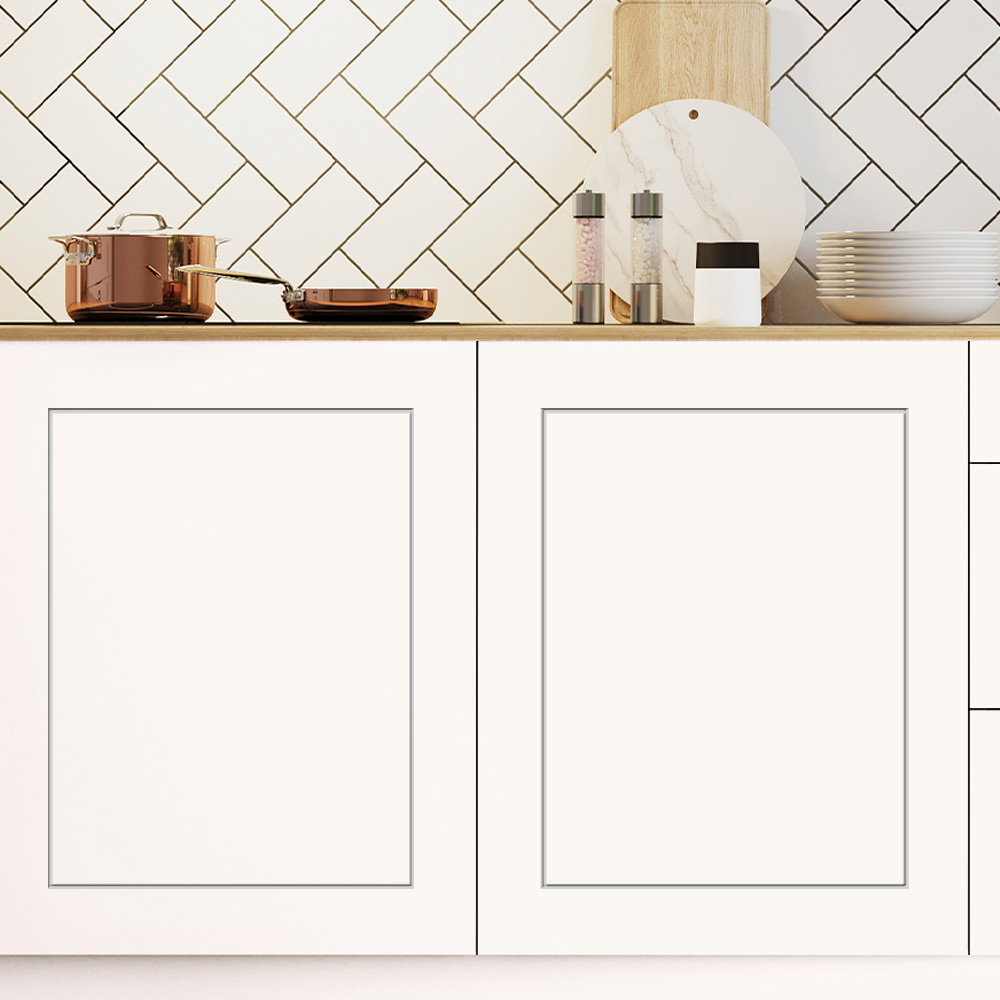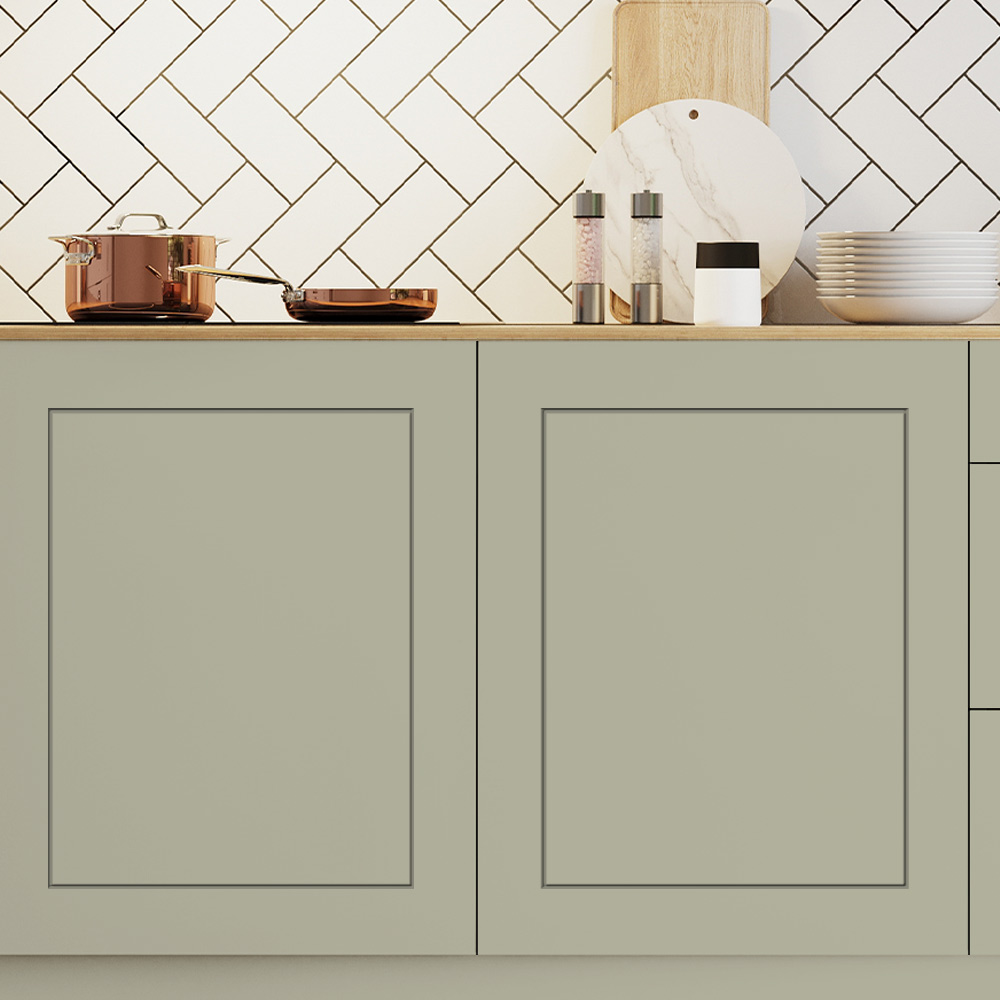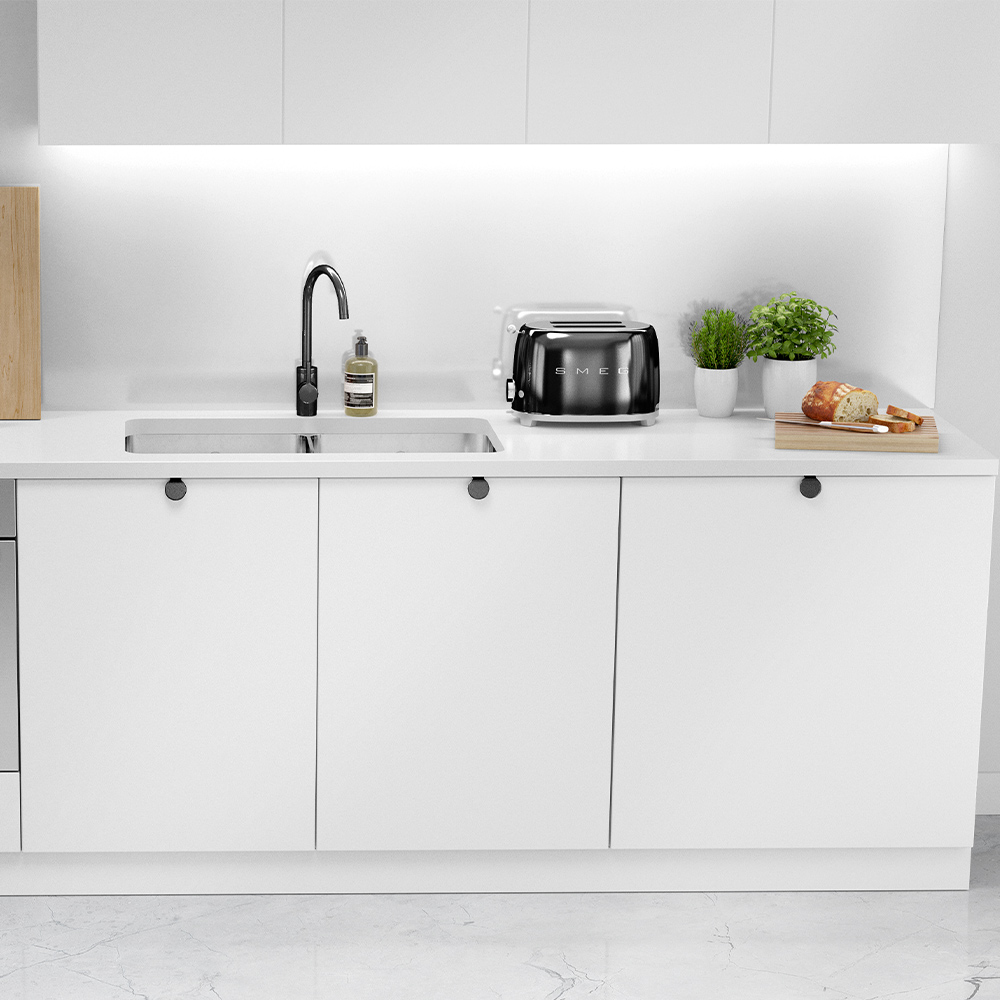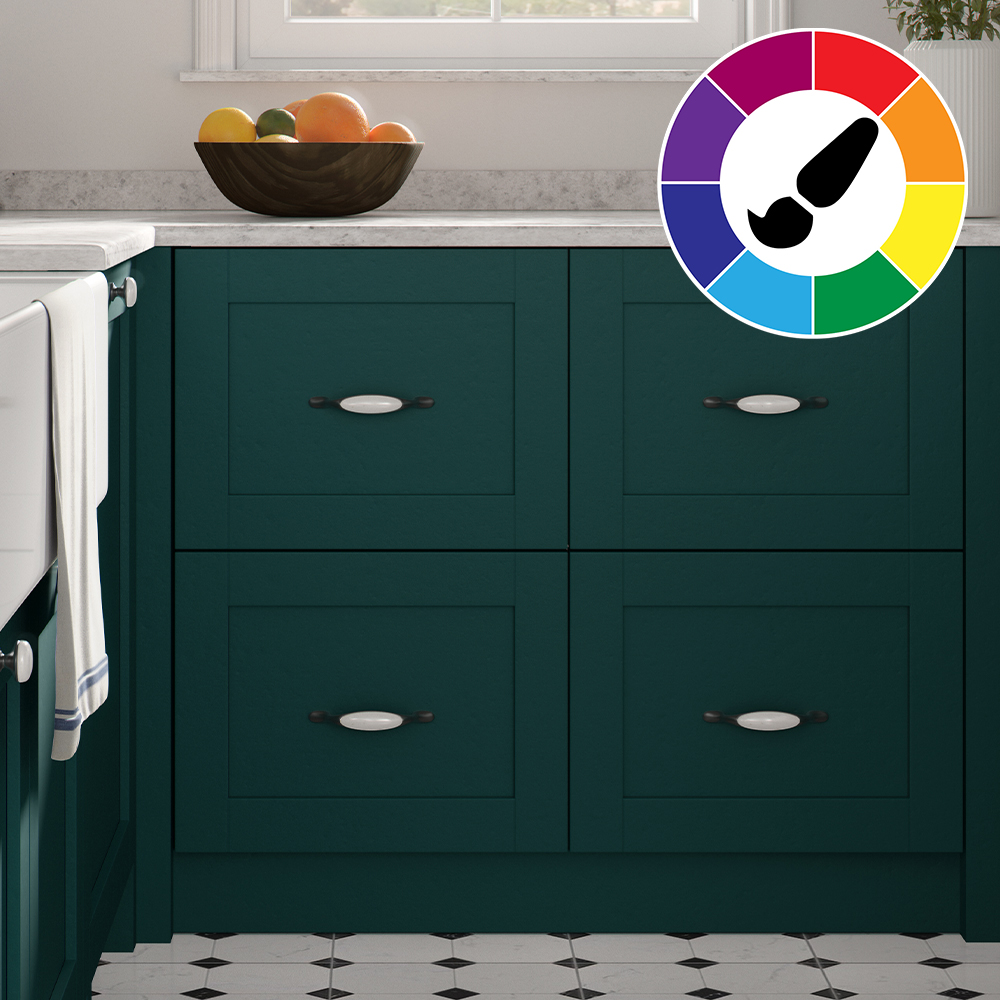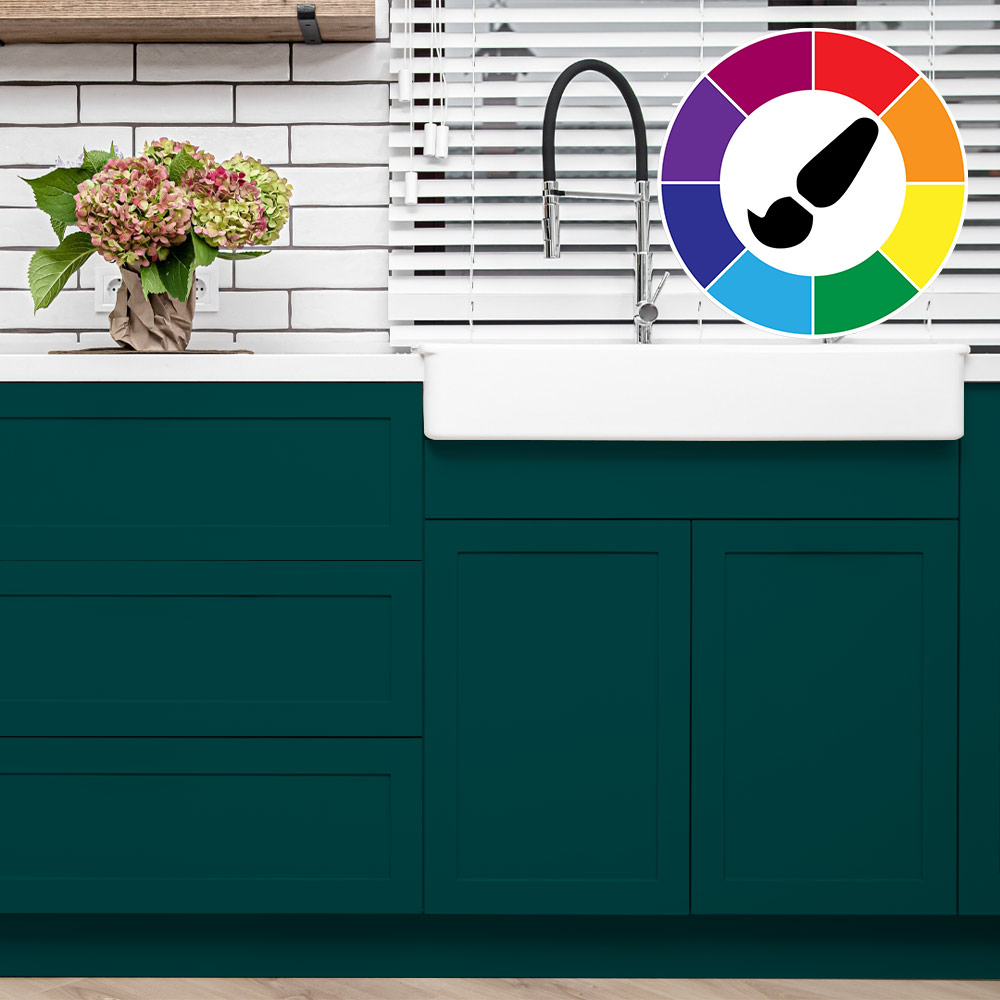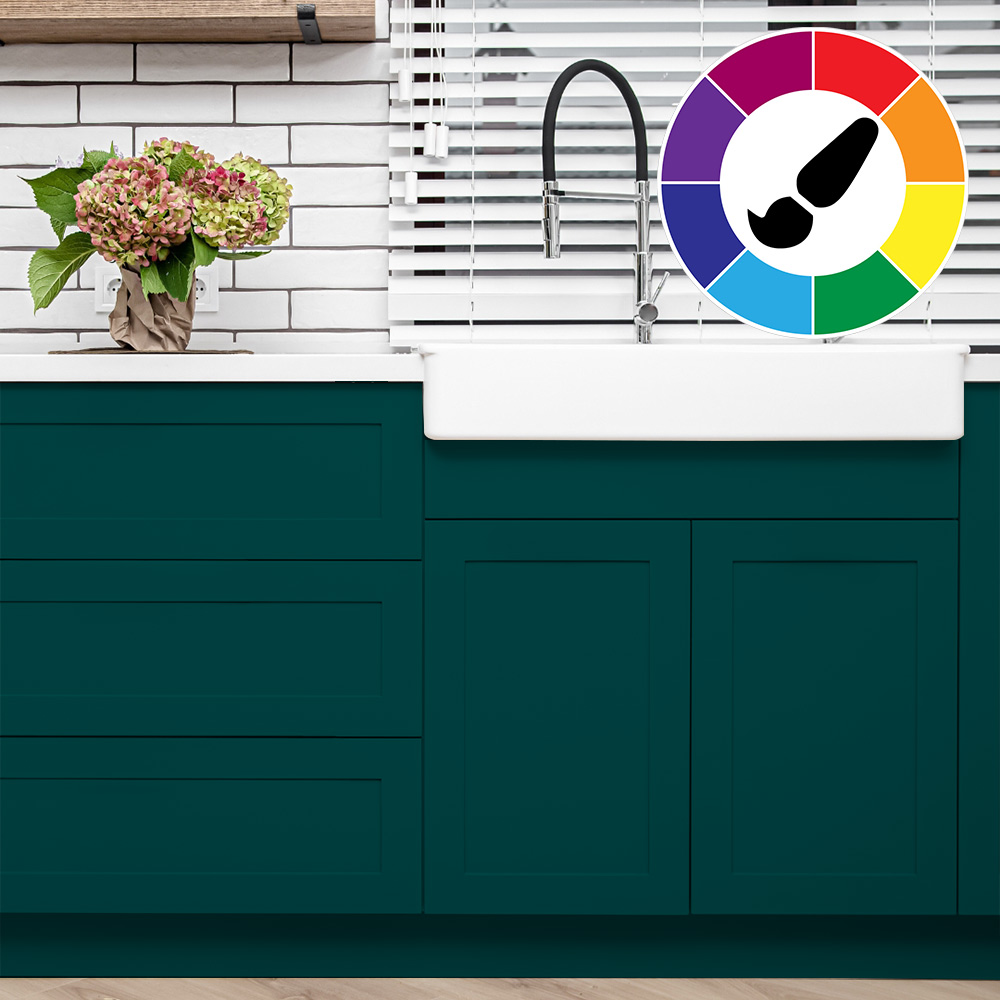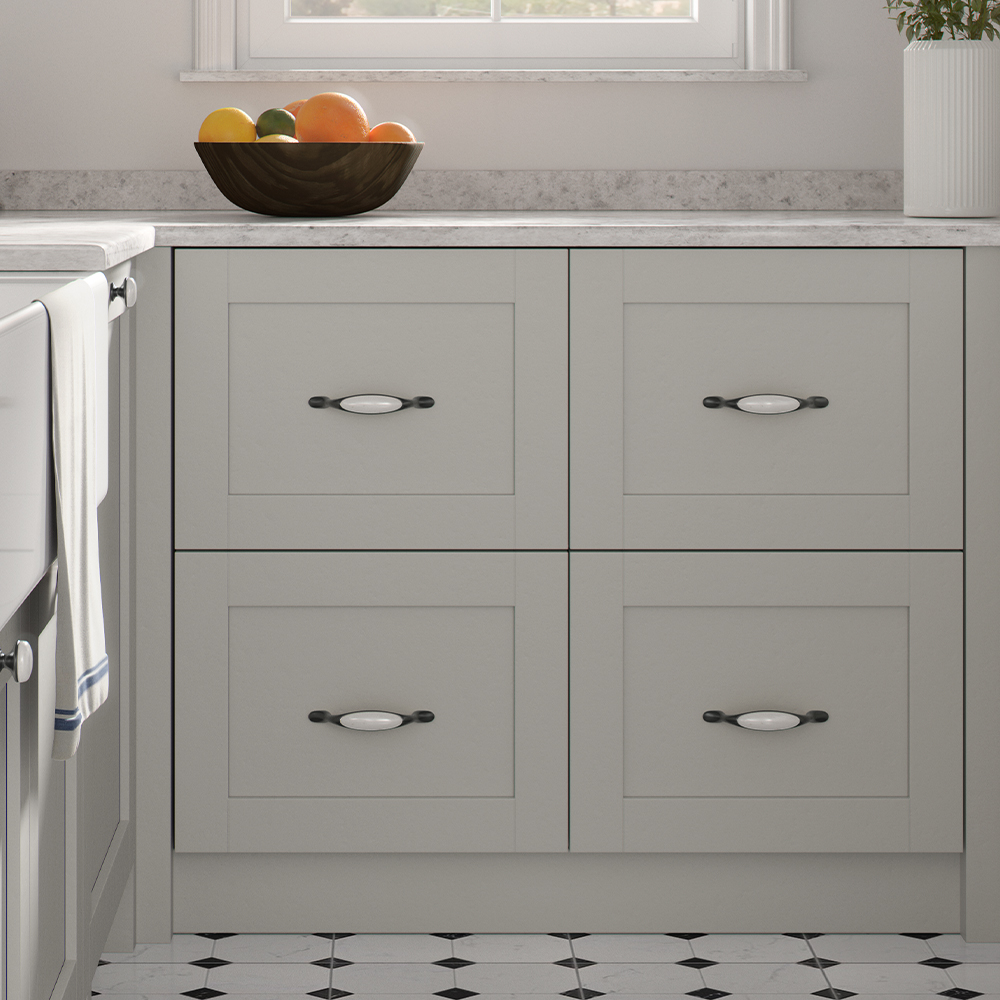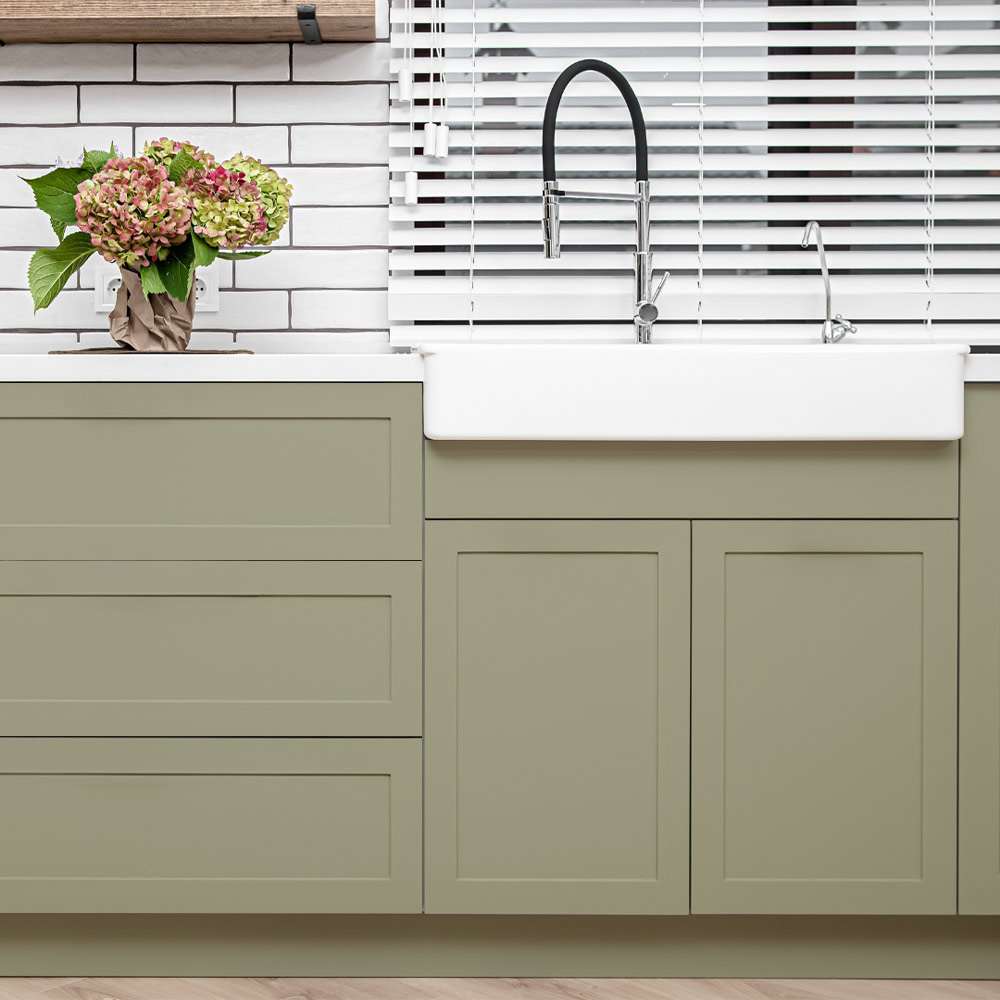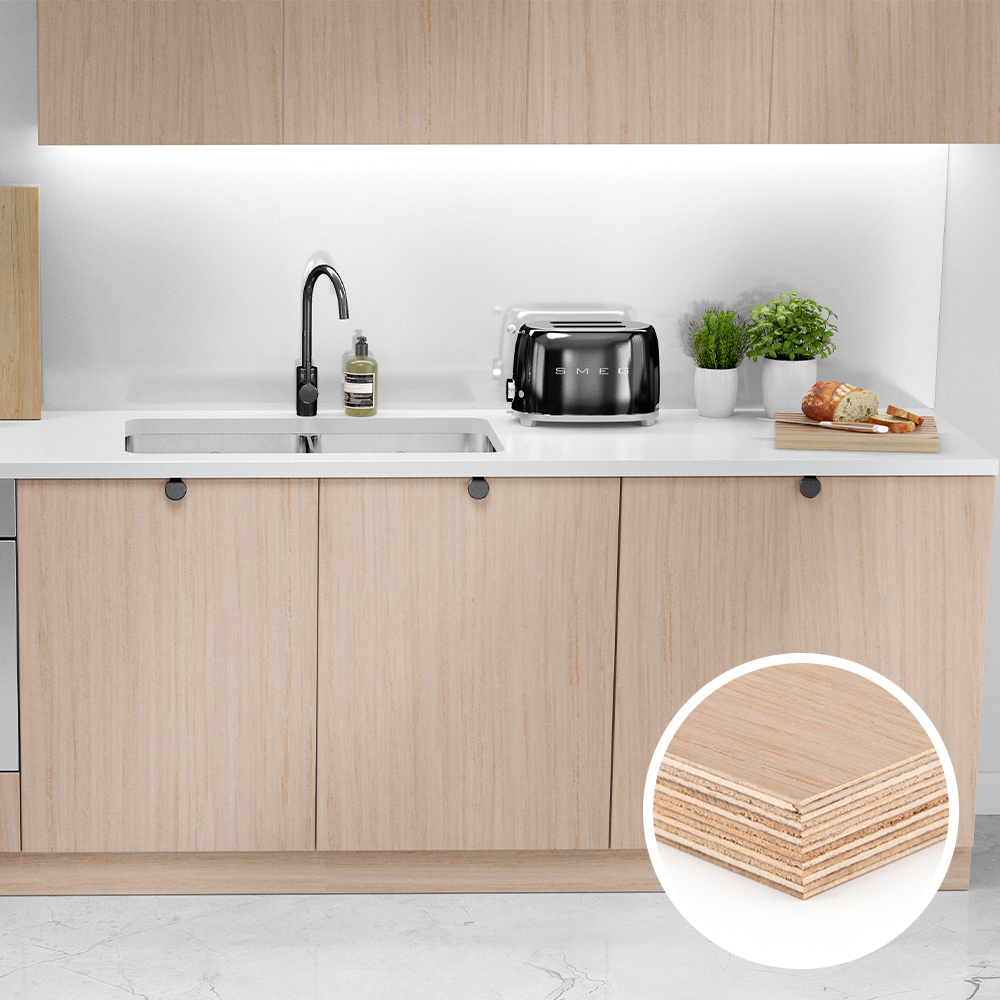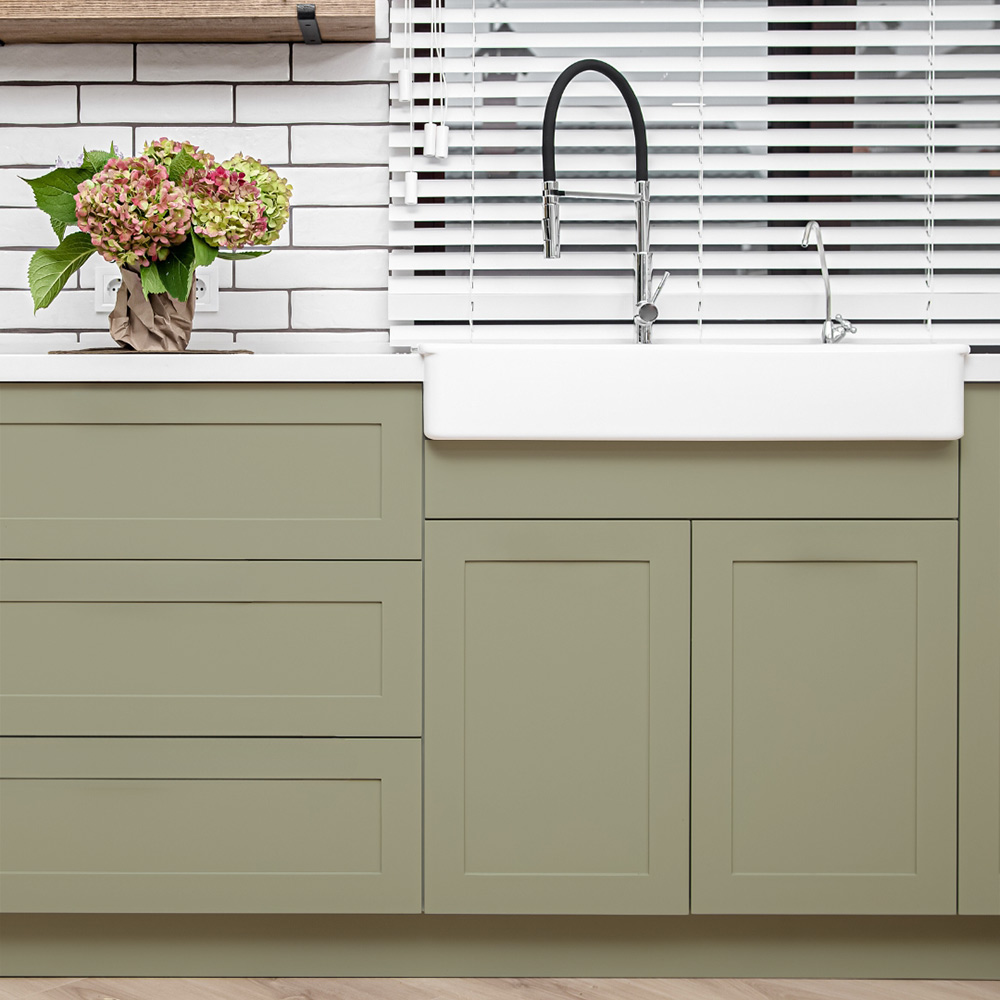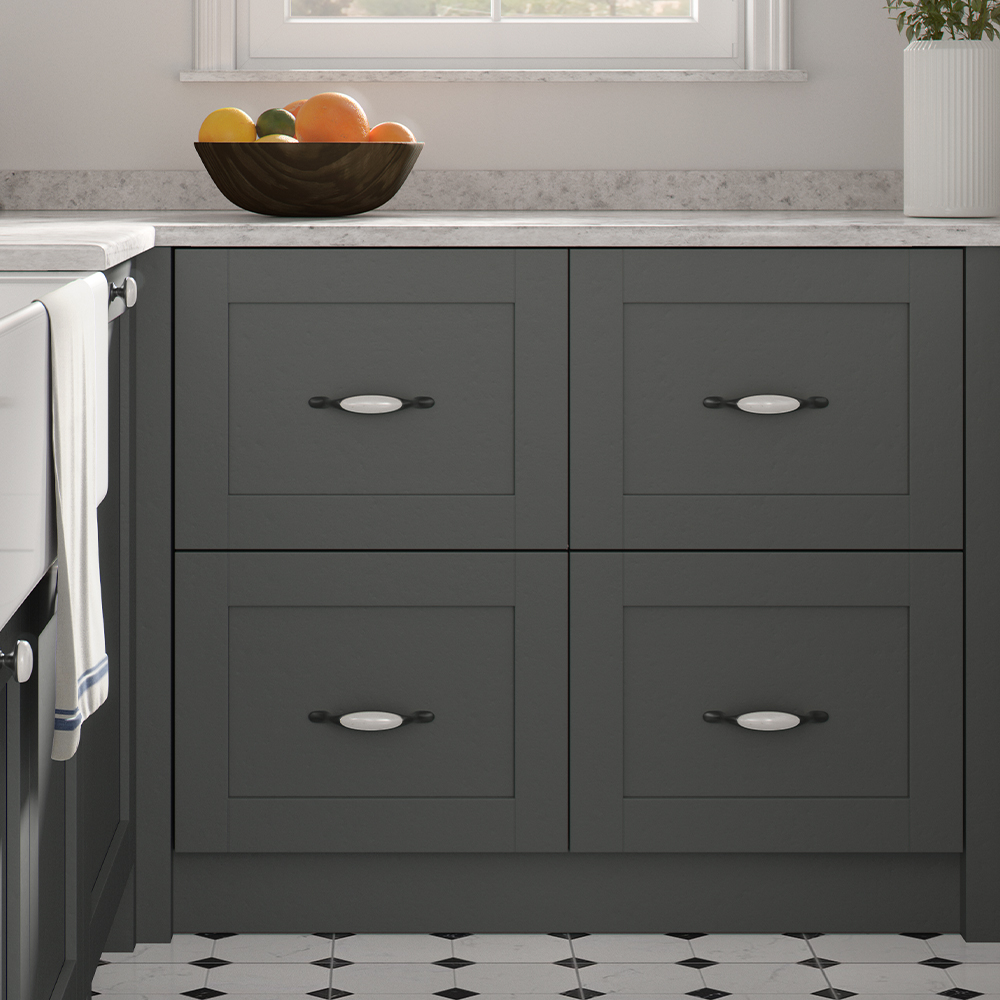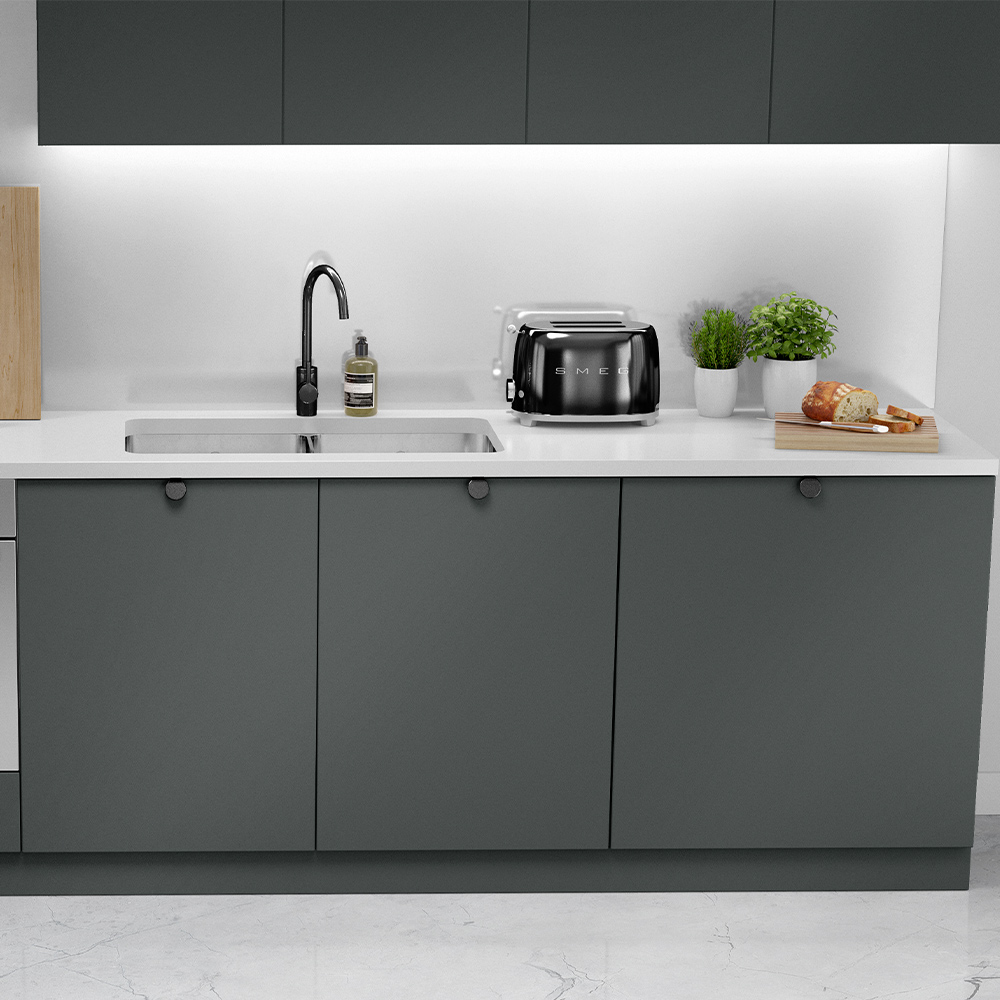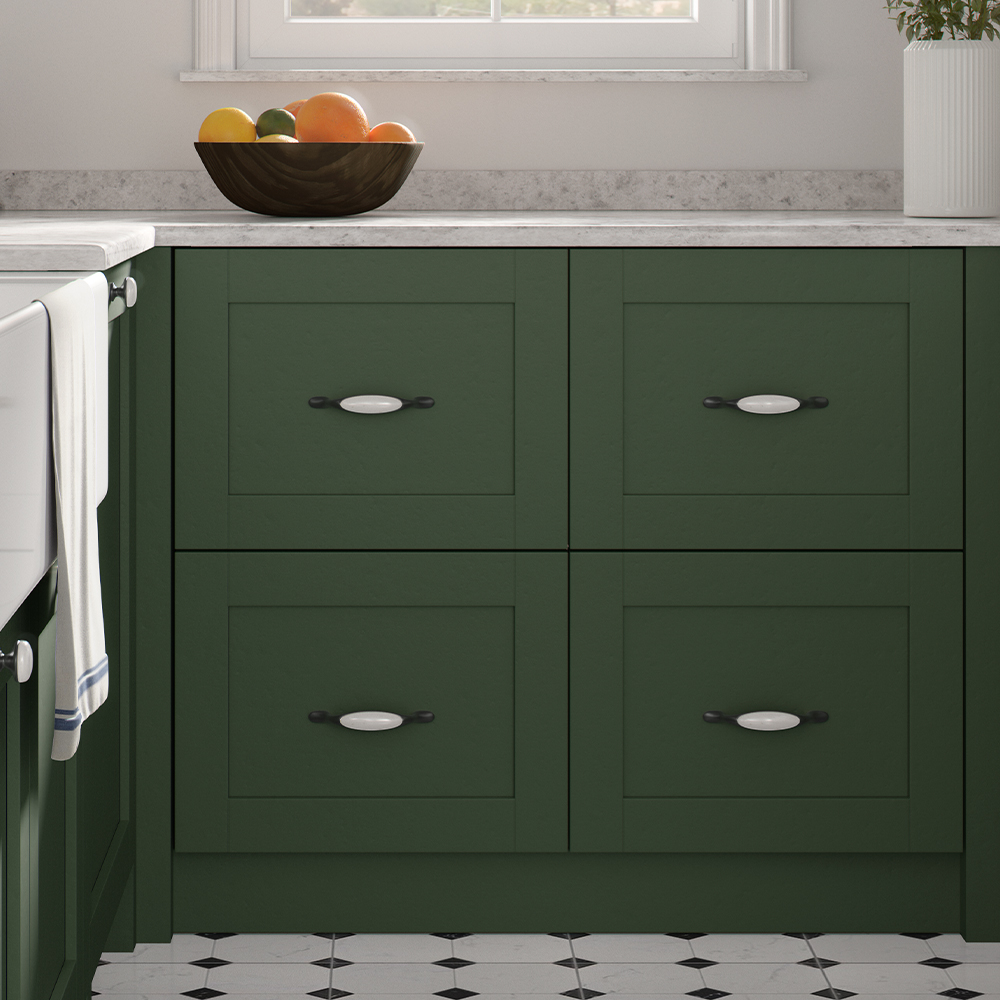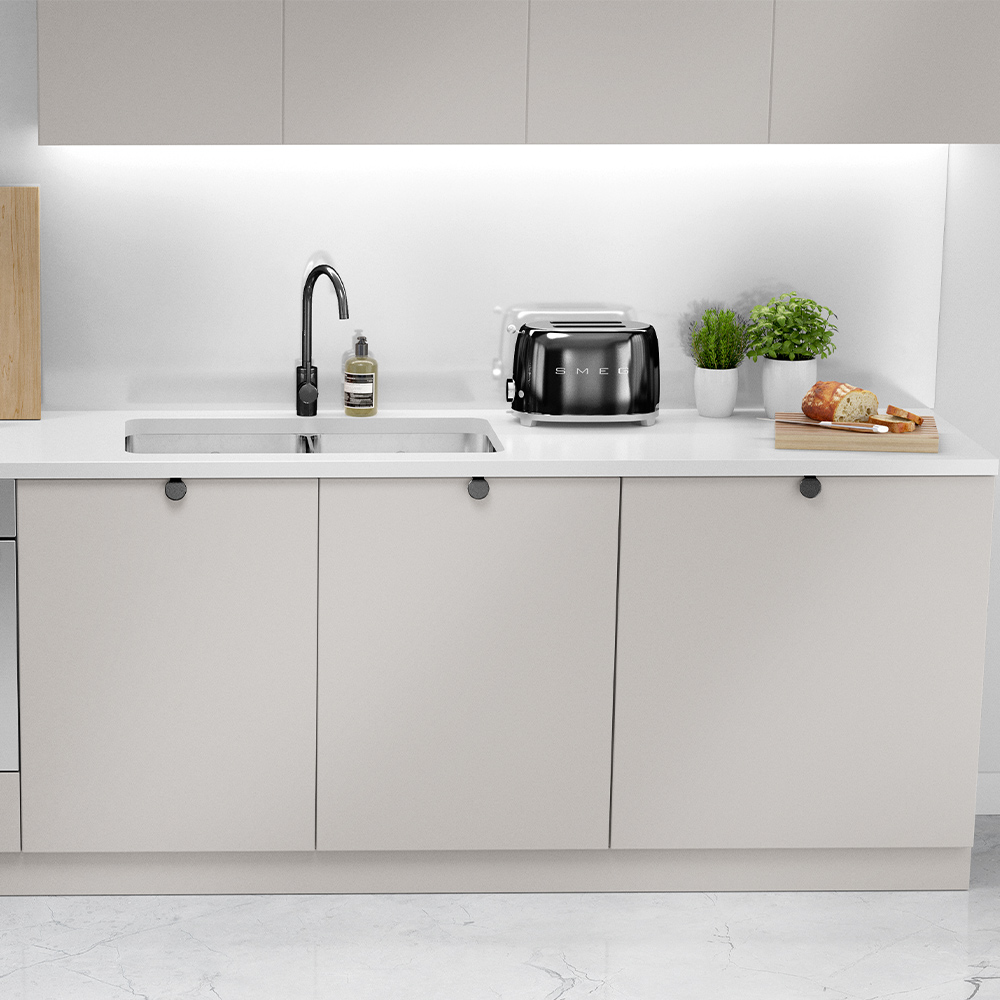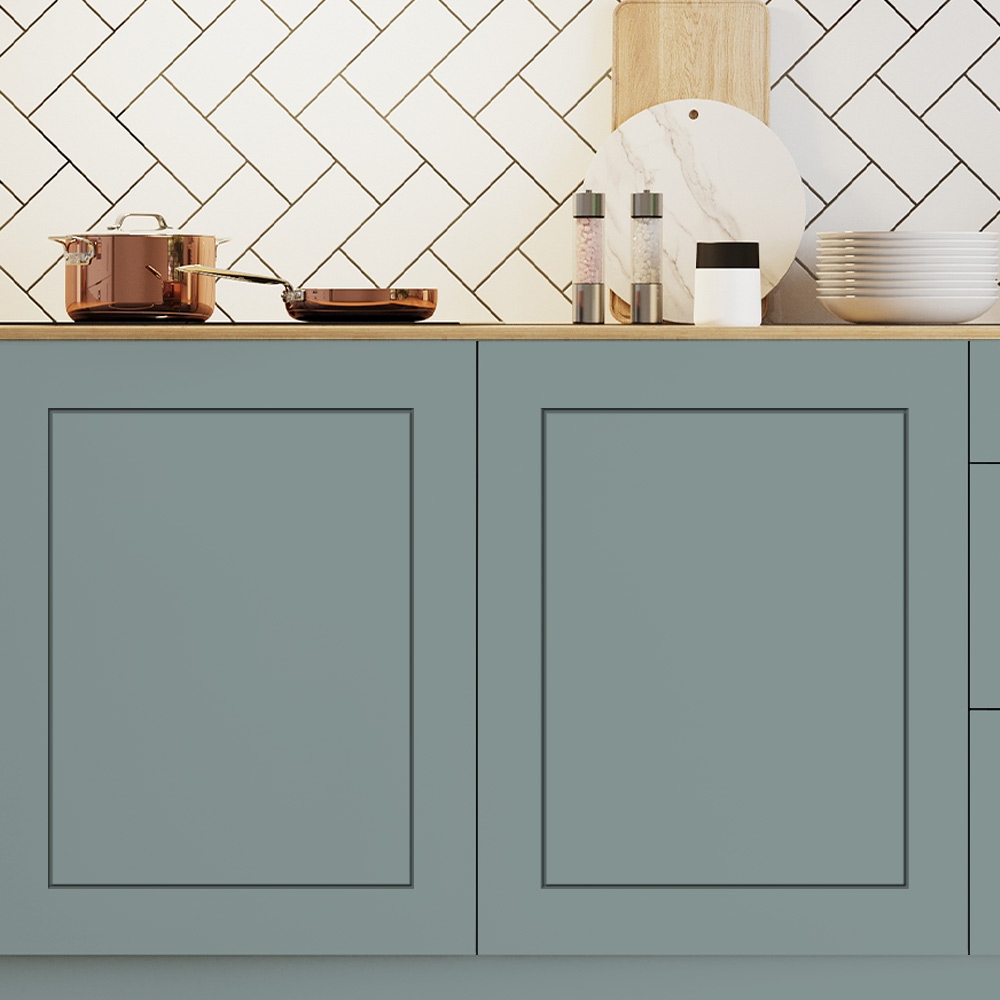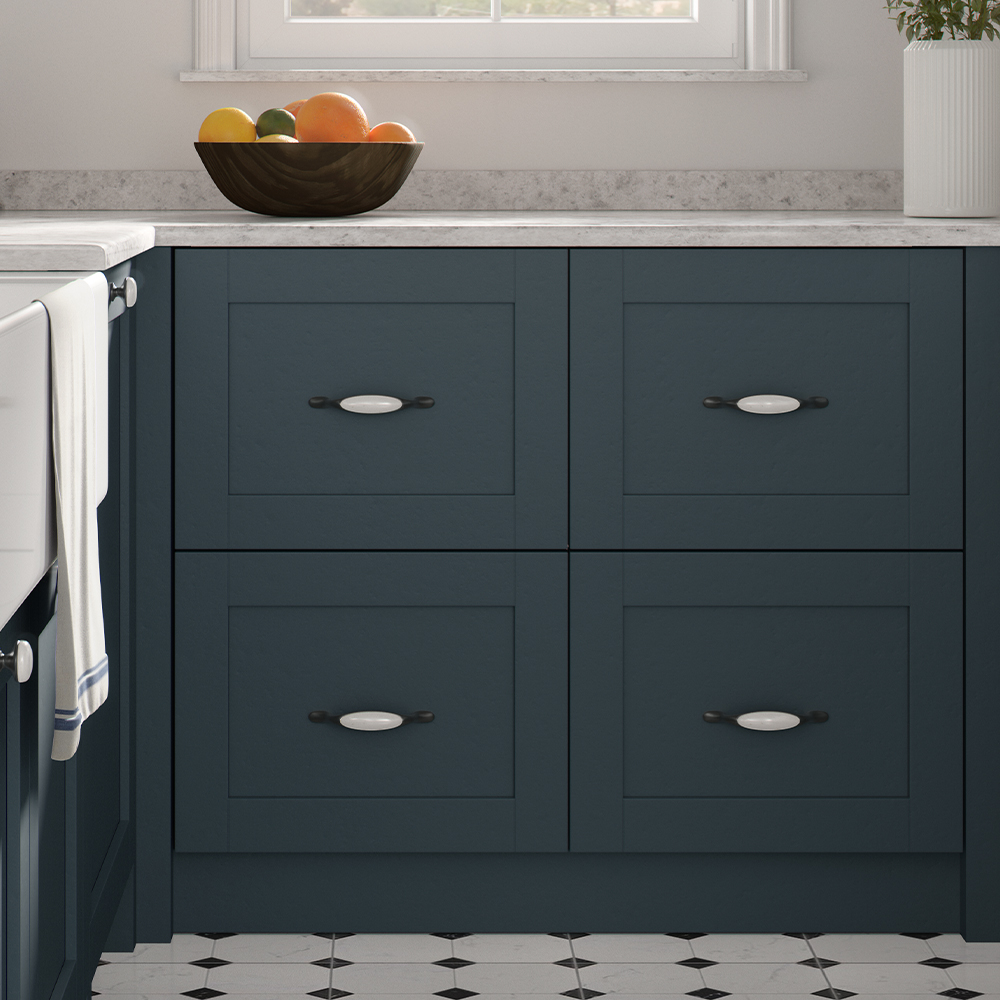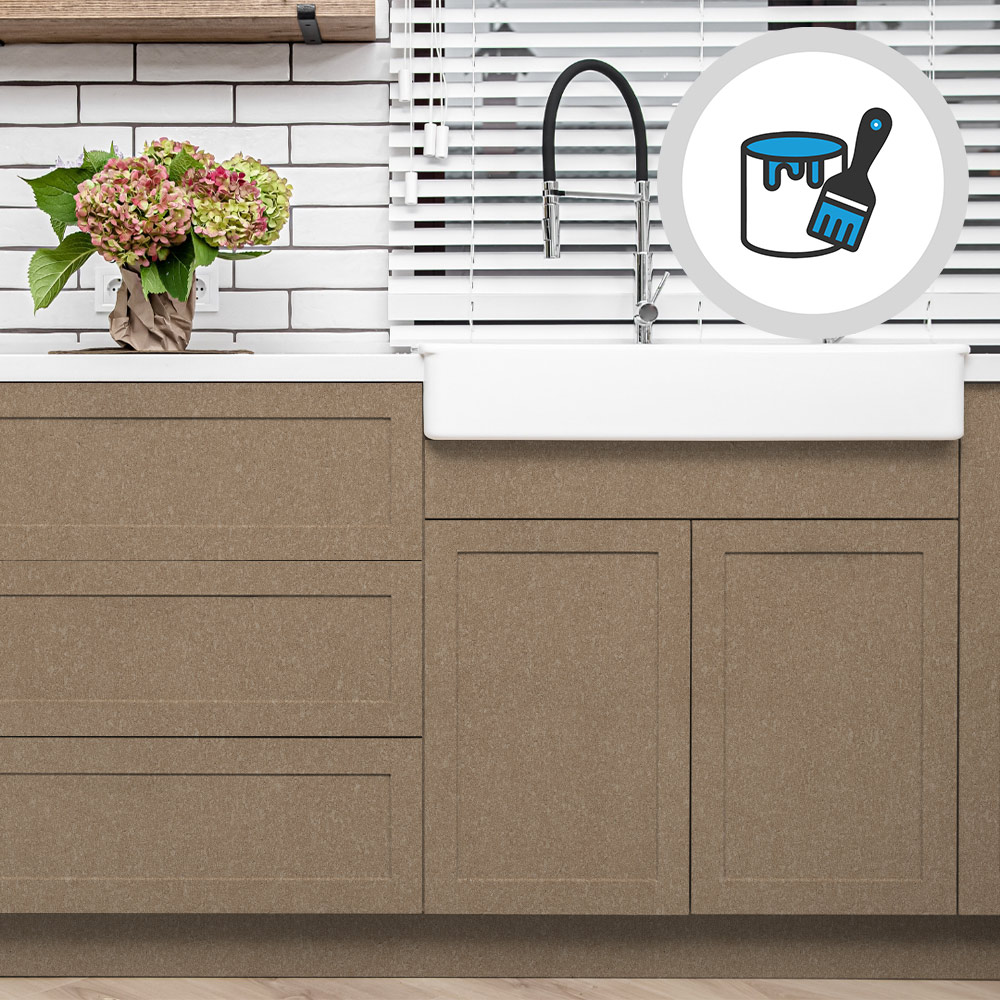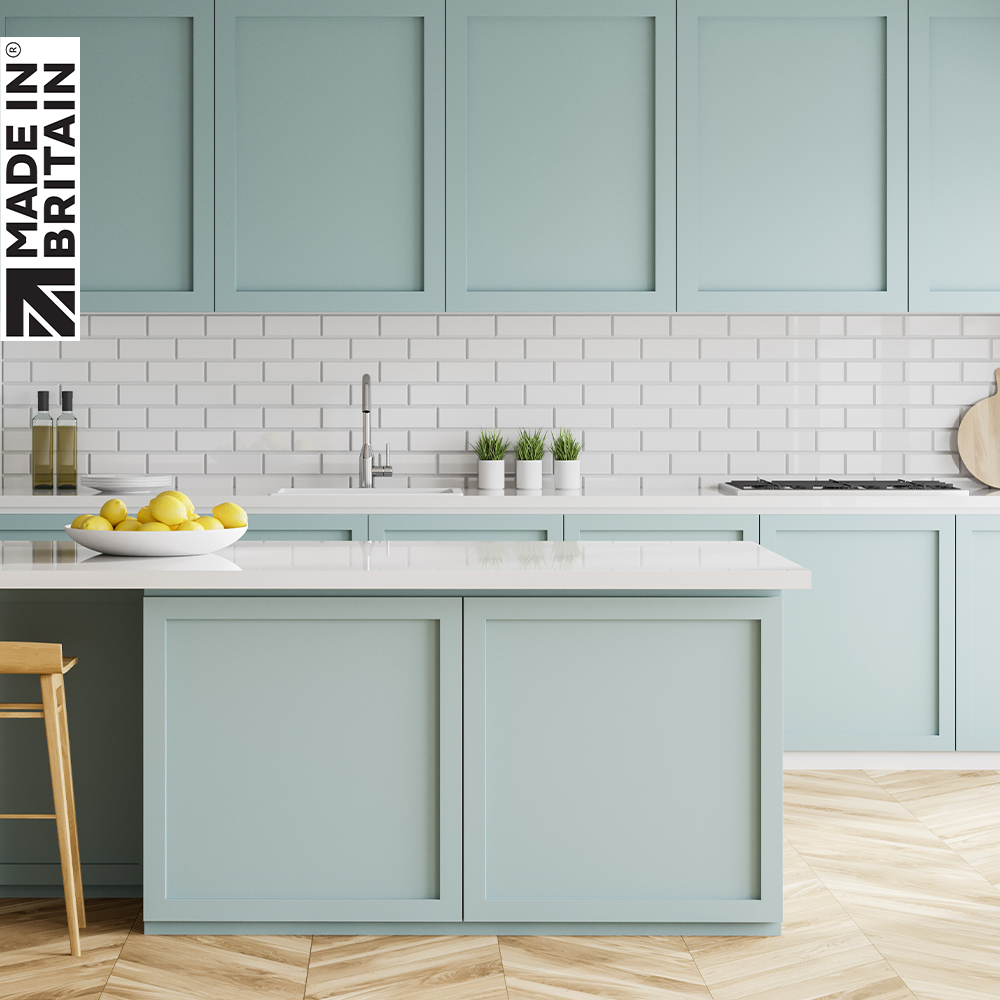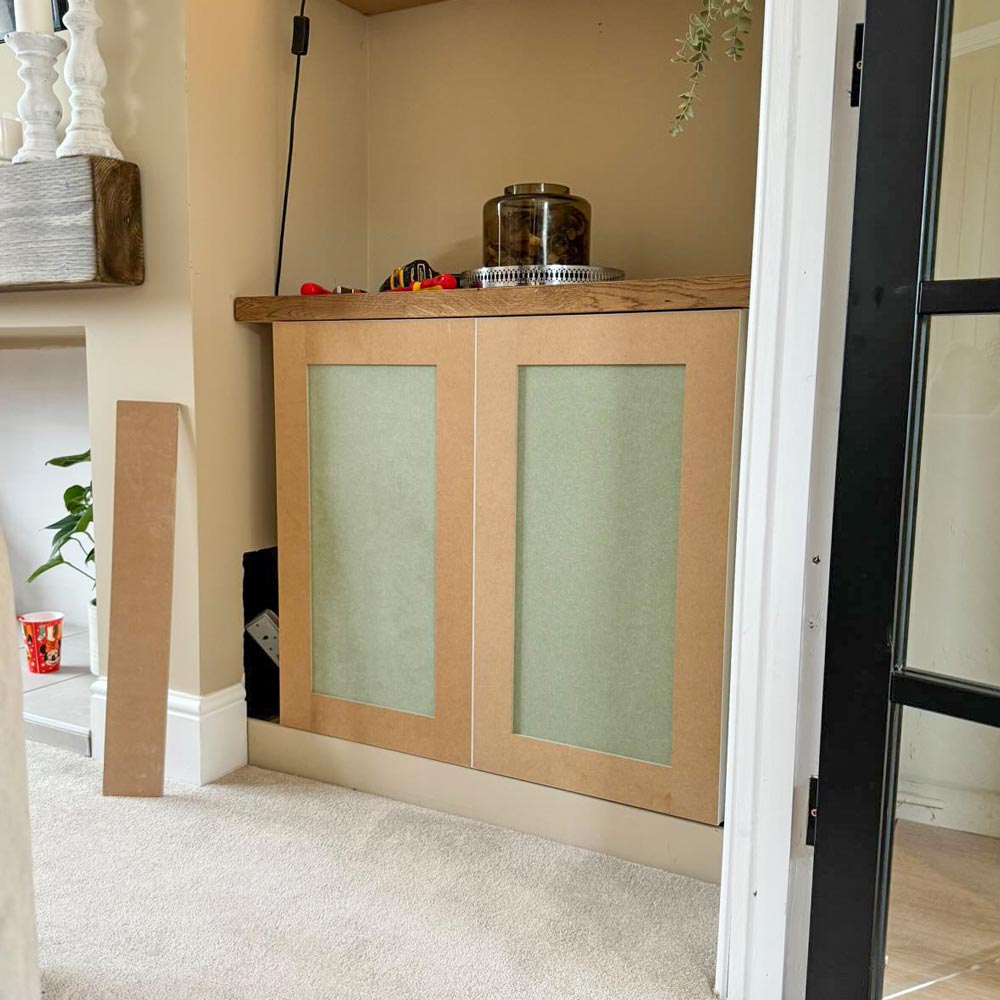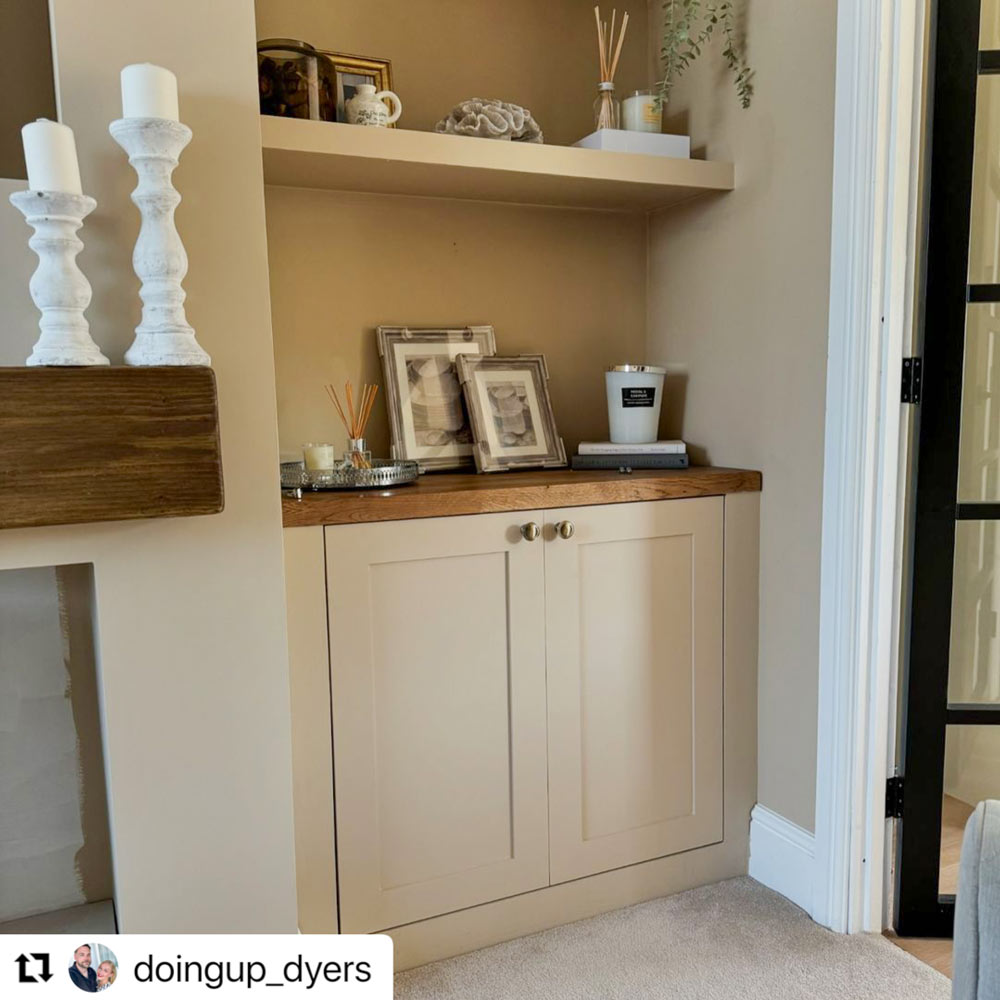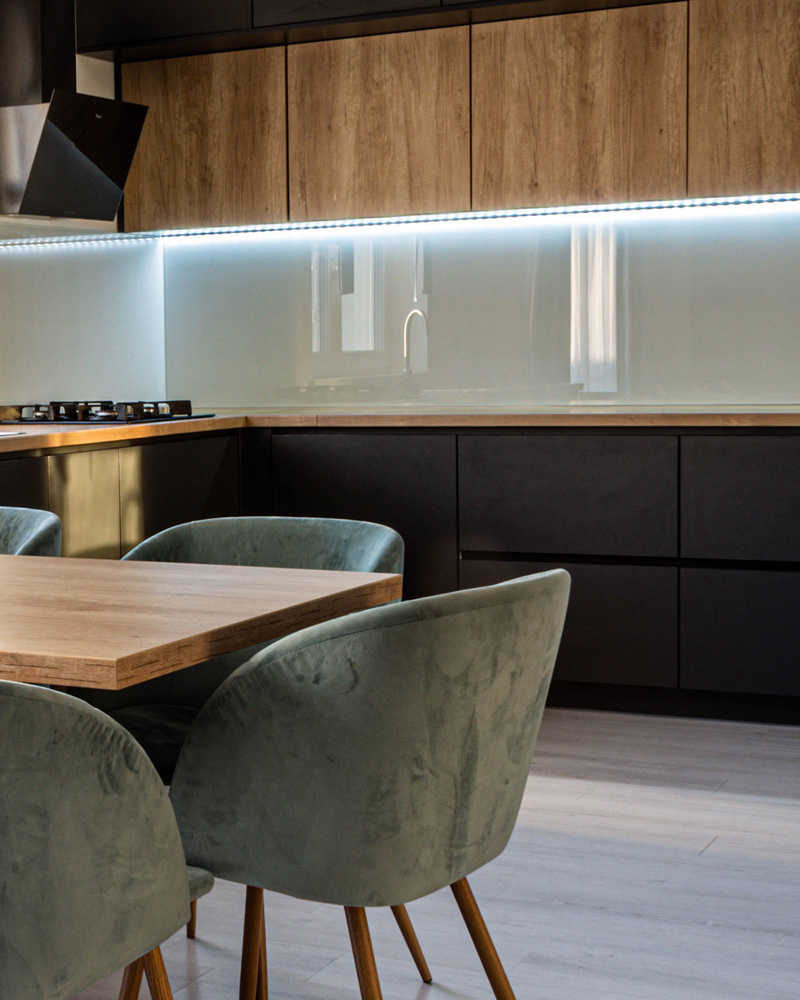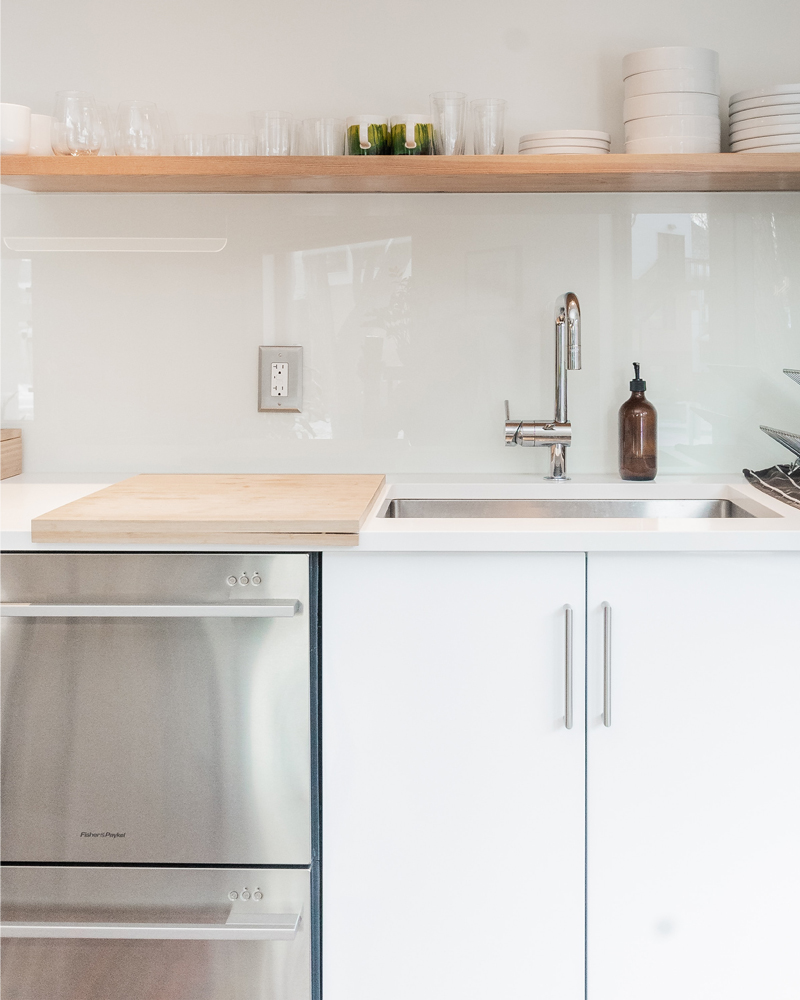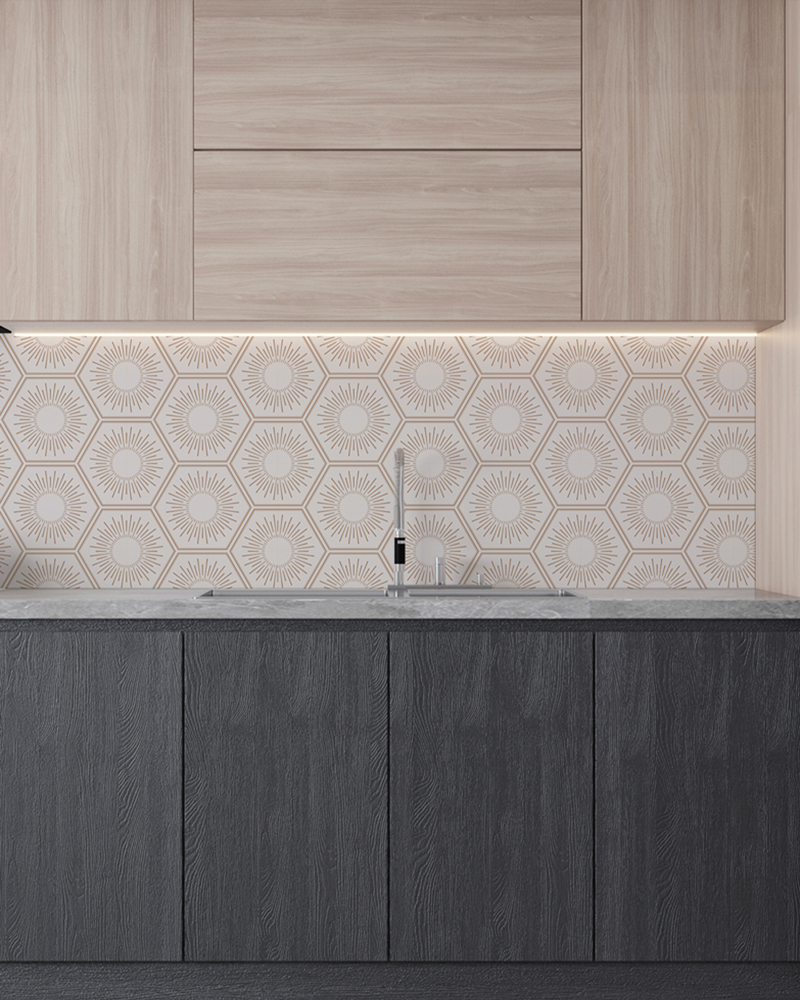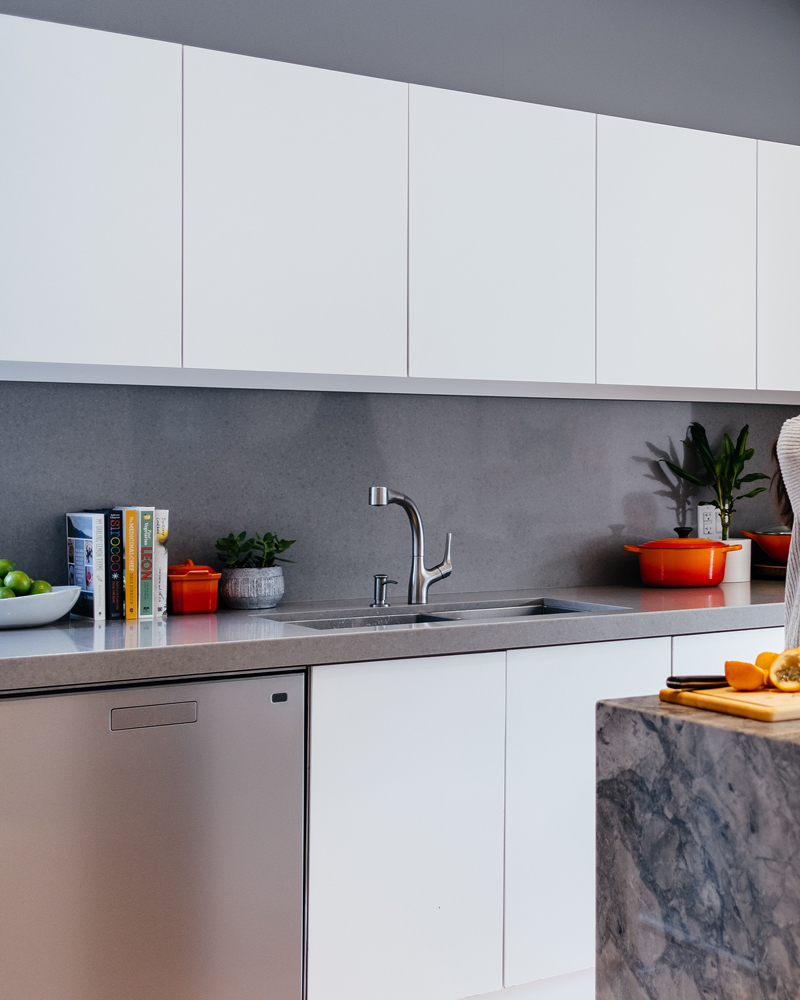We believe in exceptional customer service, so our knowledgeable team is ready to assist you at every step of the process. From selecting the right kitchen cupboard doors to answering any questions you may have on installation and maintenance, our customer service team will be dedicated to ensuring your experience with us is smooth and easy.
What types of materials are used for your kitchen doors?
Our kitchen cabinet doors are made from three core materials, each offering different benefits:
- MDF (Medium-Density Fibreboard) – Available in painted, paintable, or veneered finishes. MDF provides a smooth, stable surface ideal for custom colours and detailed designs.
- MFC (Melamine-Faced Chipboard) – A budget-friendly, low-maintenance option with a durable melamine surface in a variety of colours and woodgrain textures.
- Plywood – A strong, premium material with a natural layered edge and modern appeal. Plywood is ideal for contemporary or minimalist kitchens.
You can use the filter above to view kitchen doors by material and choose the one that best fits your style and needs.
Do you provide samples?
Colour swatch samples are available to purchase for £5 each, by clicking the "Order Sample" button on any of our kitchen door product pages. Please note that these are a 100mm x 100mm colour swatch and should only be used to show door colour, not door style.
Can I paint or stain your kitchen doors to match my kitchen decor?
Most of our replacement kitchen doors are painted or finished in a veneer, so are unsuitable for painting and staining.
We do however offer a range of paintable kitchen doors, ready to be painted by hand, sprayed or stained in a colour of your choice.
What is the standard size of a kitchen door?
Most kitchens are made in standard sizes, with cabinets measuring something around 720mm in height by 500mm in width. Where measurements change, this is usually by height rather than width.
To fit the dimensions listed above, you'd typically be looking at a kitchen door measuring 715mm in height and 495mm in width. This ensures that the door has a flush fit and doesn't rub up against other cupboard doors and drawer fronts in the cabinet.
Despite there being standard sizes, we strongly recommend manually measuring your current door sizes as even a few millimetres difference can leave your kitchen with a wonky look. We offer standard sizes for all of our kitchen doors and drawer fronts, as well as a range of sizes for popular kitchen units and manufacturers including IKEA, Howdens and B&Q.
If you're planning a kitchen revamp or just replacing doors, understanding cabinet dimensions can help you choose the right fit the first time. For a complete breakdown of base, wall, and tall kitchen unit sizes — including measurements for standard and branded units — check out our kitchen unit sizes guide.
How do I measure my kitchen door size?
With a tape measure, take the height of the door followed by the width, in millimetres. Make sure you are only measuring the cupboard door and drawer fronts themselves, not the cabinets. We recommend measuring against the back of the doors rather than the front, as these are usually the squareest parts. If you are ordering multiple doors we suggest you measure these individually as some doors may look the same size but have slightly different dimensions. Find out more with our How to Measure Kitchen Doors guide.
How many hinges do I need per door?
Two-door hinges are the most common configuration for standard-sized kitchen cupboard doors. For larger cabinet door sizes, between 1500mm and 2200mm, we'd suggest using 3 hinges.
How do I measure for hinge holes?
To measure hinge holes for your new kitchen doors, remove the existing door and measure from the top or bottom edge to the centre of each hinge hole. Most doors have two standard 35mm holes positioned 22.5mm in from the edge, but the vertical spacing can vary, so it’s important to measure each door individually.
Be sure to note if the door is left-hand, right-hand, or top-hung, as this affects hole positioning.
You’ll enter these measurements when ordering, and we’ll pre-drill your doors accordingly.
For a full step-by-step guide with illustrations, visit our handy article on How to Measure Kitchen Door Hinge Holes.
How do I install a new kitchen door?
Installing a new kitchen door is a straightforward DIY task that can quickly transform your space. Simply remove the old door by unscrewing it from the cabinet hinges (leaving the mounting plates in place), and align your new door with the existing hinge positions.
If you purchased our pre-drilled doors, you can attach the hinges straight away. If not, you’ll need to measure and drill the hinge holes before installation. Most hinges use a 35mm hole, and we recommend using a Forstner bit for accuracy.
Once in place, use the hinge screws to secure the door, and adjust as needed to ensure it's level.
For a full walkthrough with tools, tips, and step-by-step instructions, see our How to Install Replacement Kitchen Doors guide.


